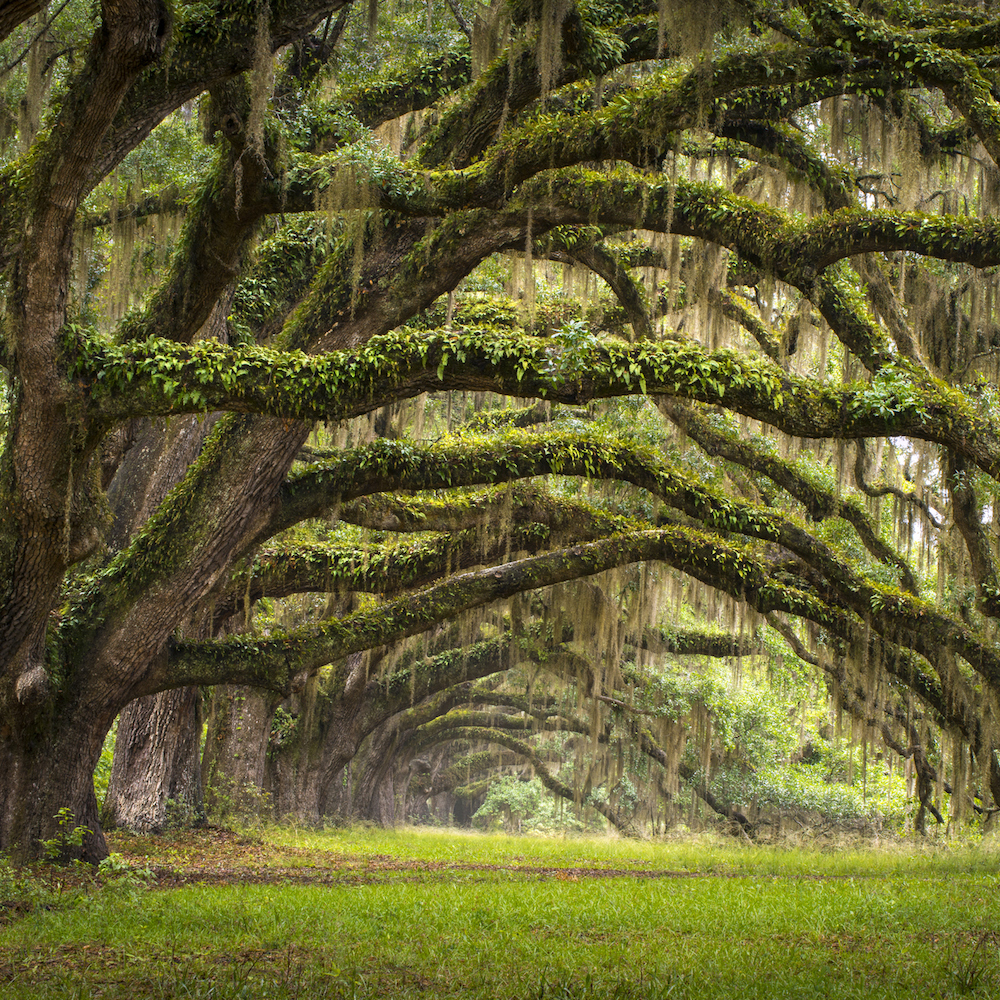

If there is one thing all 50 states have in common, it is their zeal in designating official state symbols or icons.
States assign their official imprimatur to plants, minerals, dinosaurs, pets, songs, and flowers. And, of course, all 50 have a state tree. All of these state trees, with the exception of Hawaii’s, are native to that state.
According to the United States National Arboretum in Washington, D.C., a state tree is often connected to the state by historical events, uses of trees by settlers, or the importance of the timber industry to a state’s economy.
Most states adopted their state trees following the nation’s rapid industrial and agricultural expansion in the 1800s and early 1900s. Without a strong conservation movement to oppose rapacious deforestation, many of the original forests were stripped for building materials, fuelwood, or to clear land for crops and livestock.
In recognition of Arbor Day on April 27, 24/7 Wall St. salutes the official tree in every state.
Click here to see the official tree in each state.
Click here to see our detailed findings and methodology.
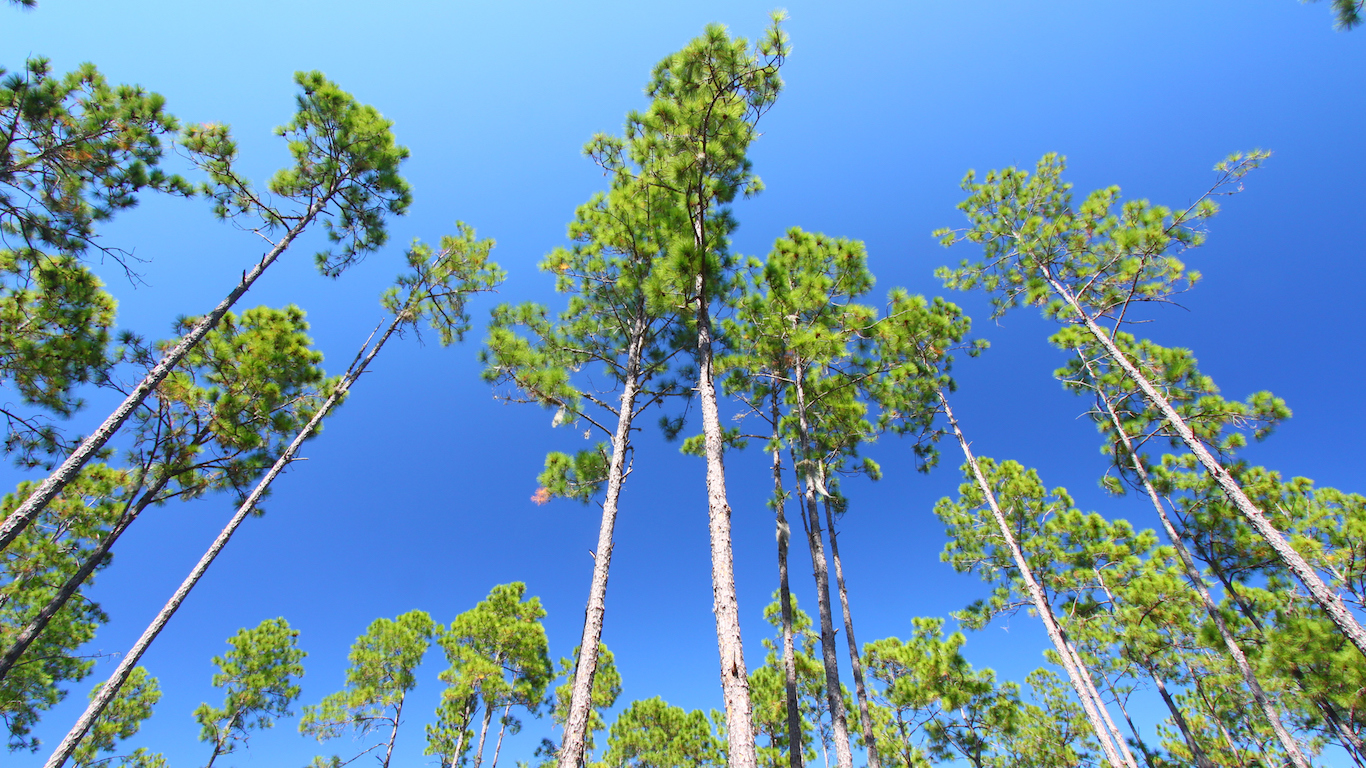
1. Alabama
> State tree(s): Southern Longleaf Pine
> Scientific name: Pinus palustris
> Maximum height: 100 feet
> Named the state tree in: 1997
[in-text-ad]
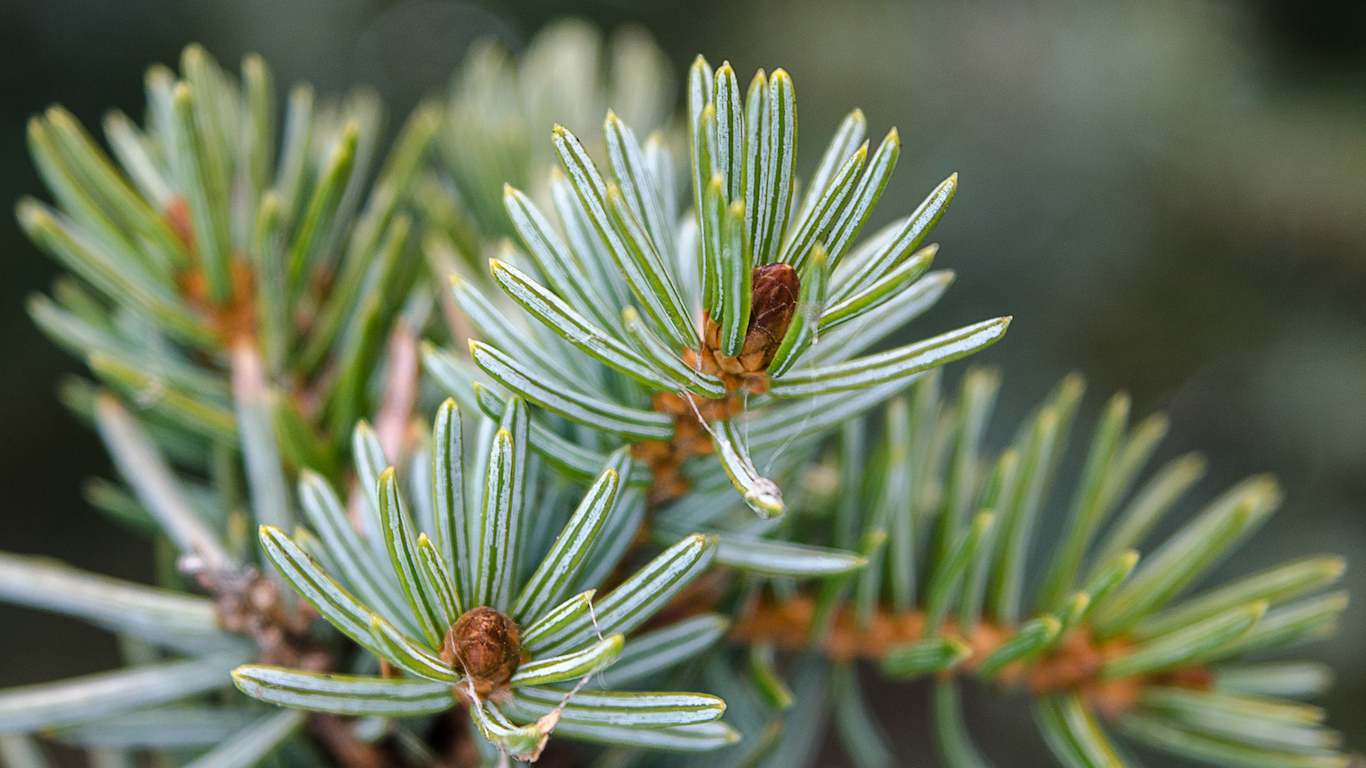
2. Alaska
> State tree(s): Sitka Spruce
> Scientific name: Picea sitchensis
> Maximum height: 180 feet
> Named the state tree in: 1962
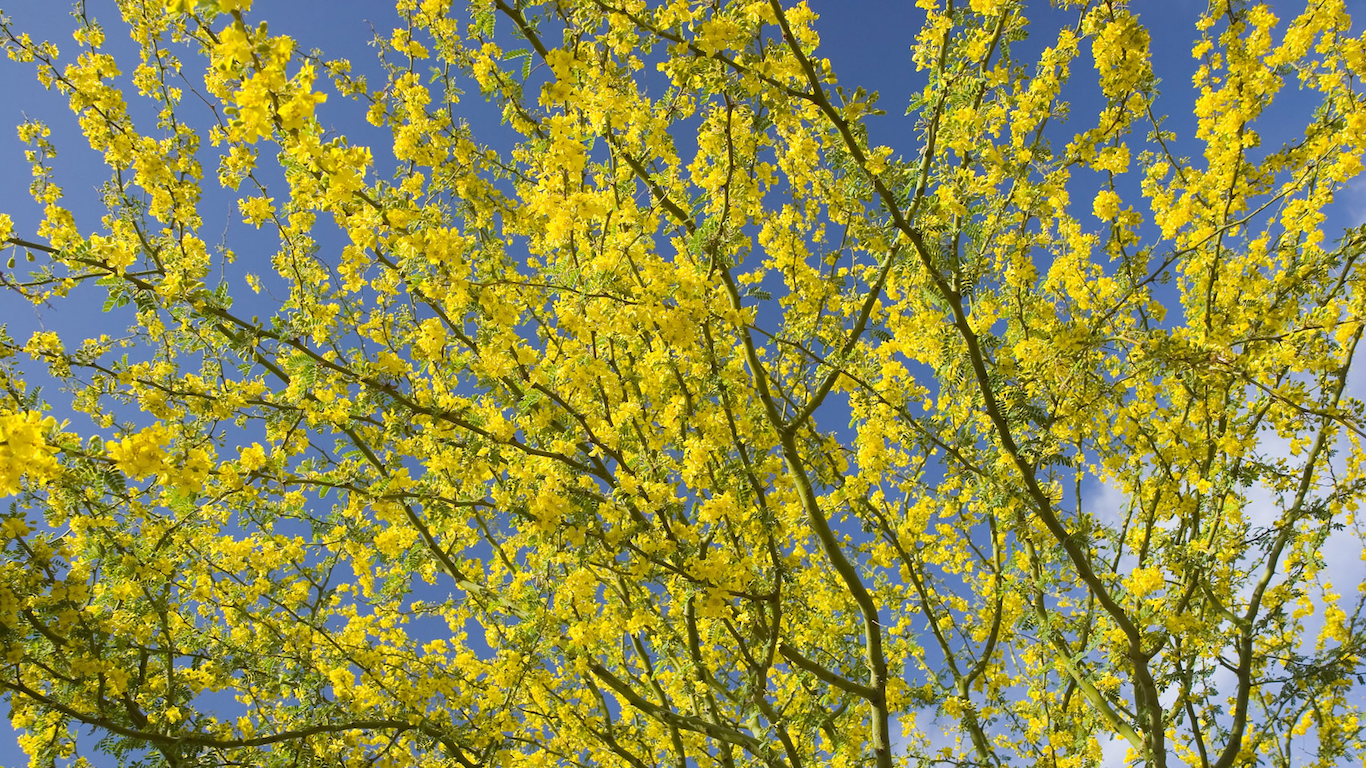
3. Arizona
> State tree(s): Palo Verde
> Scientific name: Parkinsonia florida
> Maximum height: 40 feet
> Named the state tree in: 1954
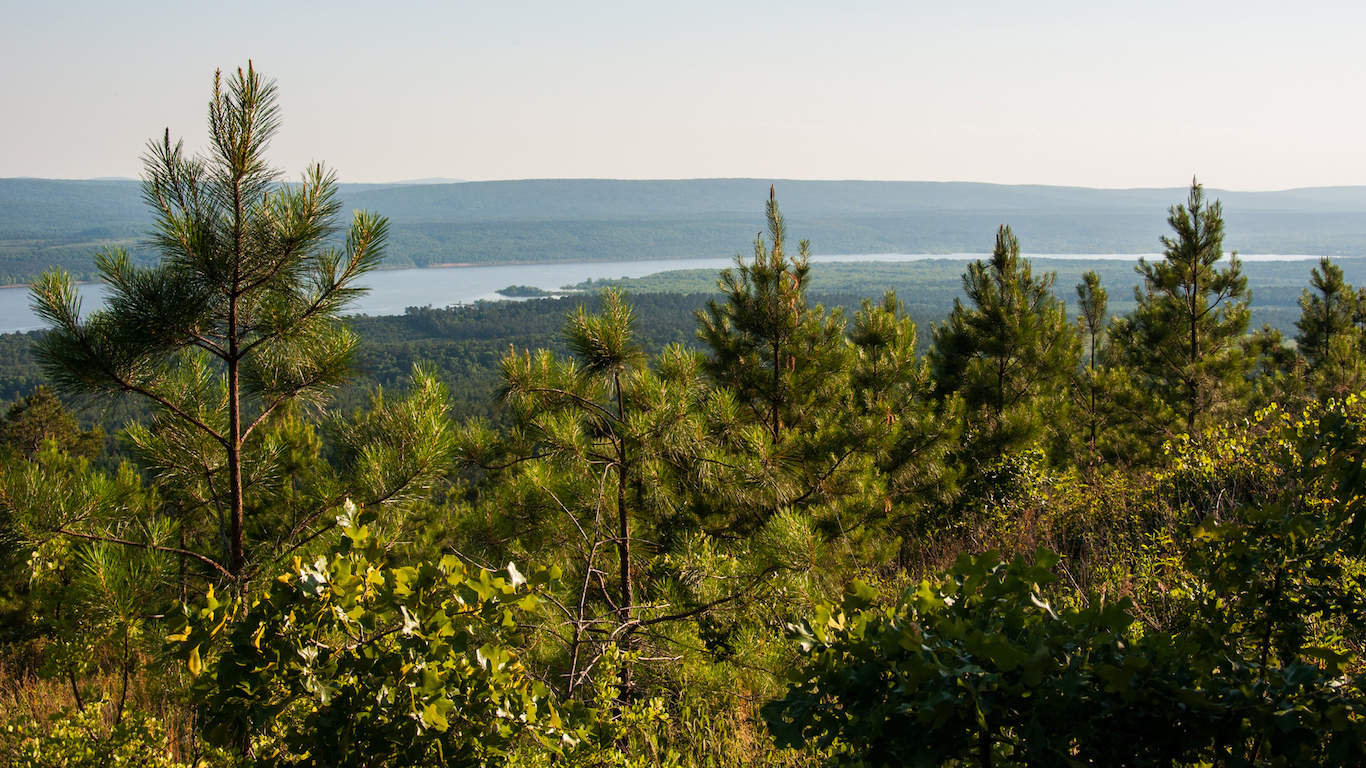
4. Arkansas
> State tree(s): Pine
> Scientific name: Pinus taeda
> Maximum height: 100 feet
> Named the state tree in: 1939
[in-text-ad-2]
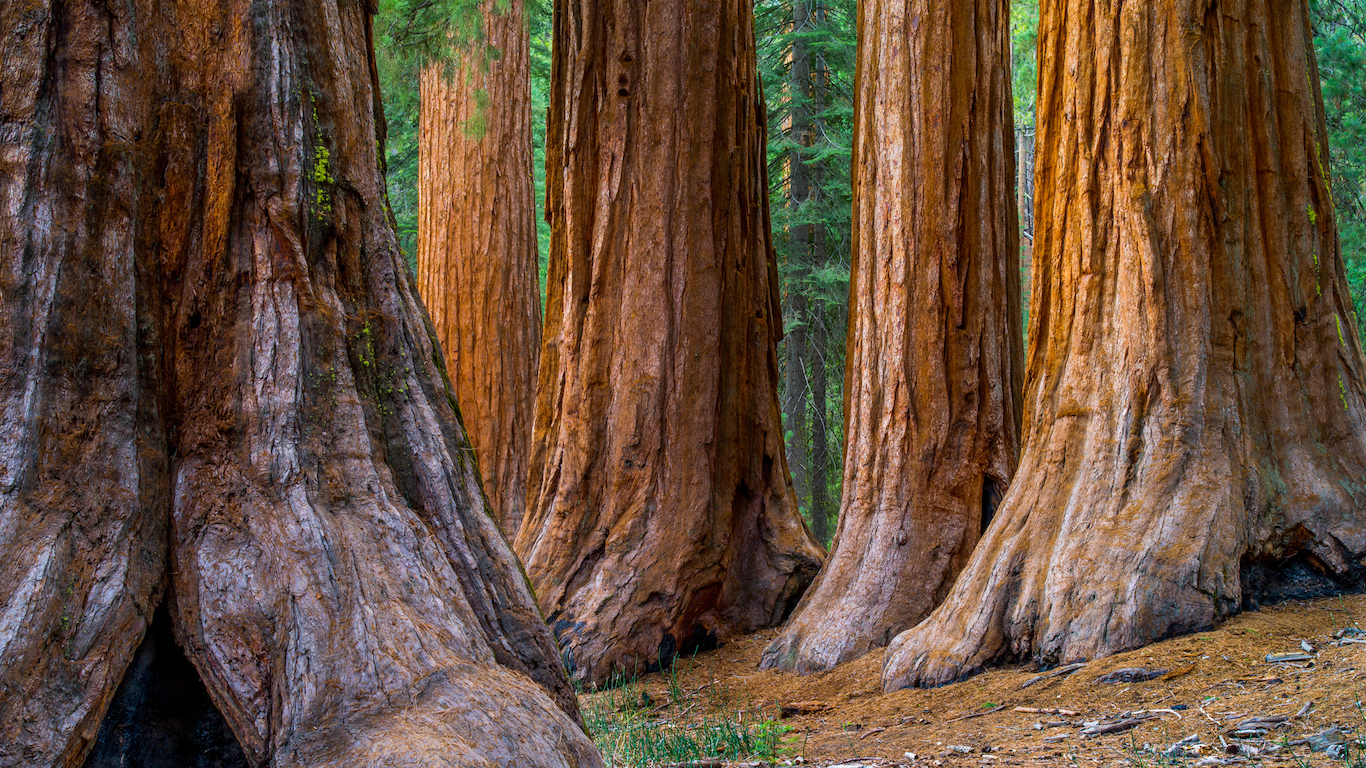
5. California
> State tree(s): California Redwood
> Scientific name: Sequoia sempervirens/Sequoiadendron giganteum
> Maximum height: 250+ feet
> Named the state tree in: 1937
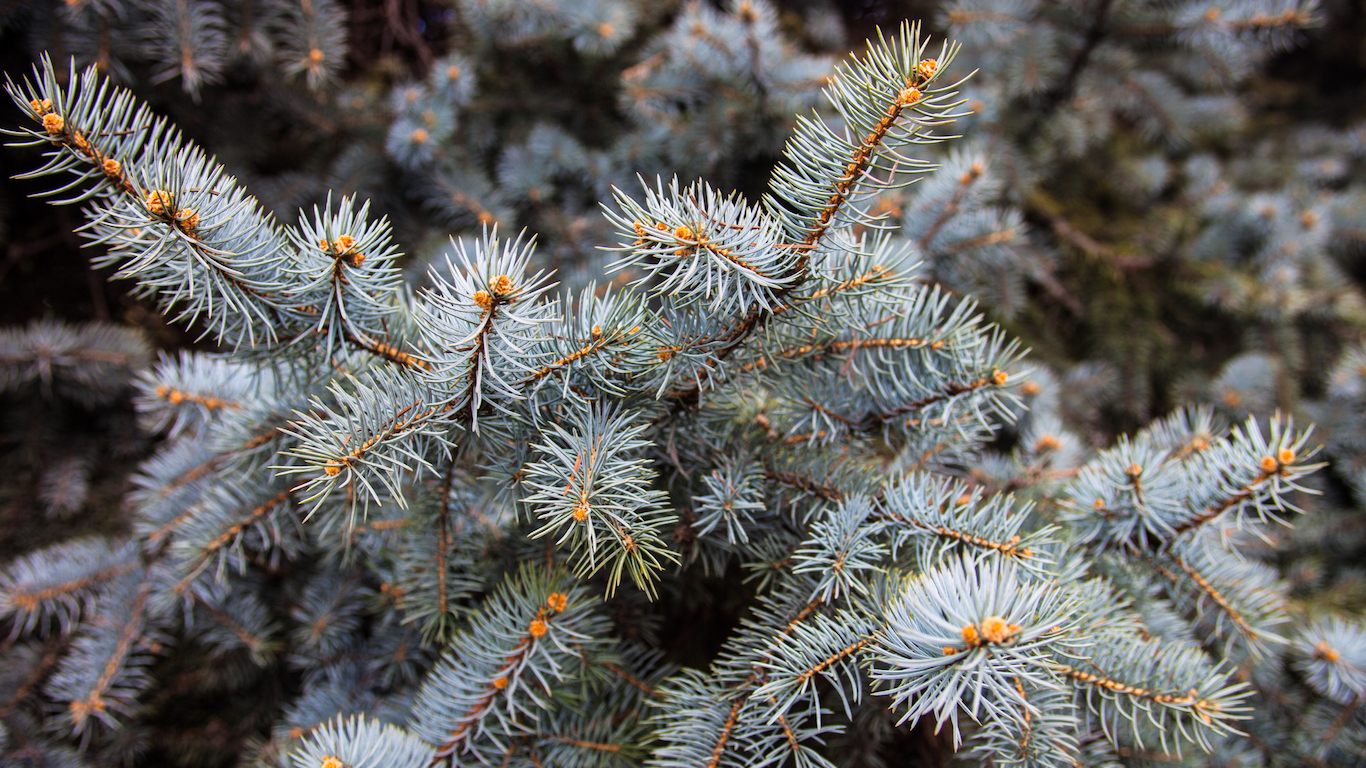
6. Colorado
> State tree(s): Colorado Blue Spruce
> Scientific name: Picea pungens
> Maximum height: 75 feet
> Named the state tree in: 1939
[in-text-ad]
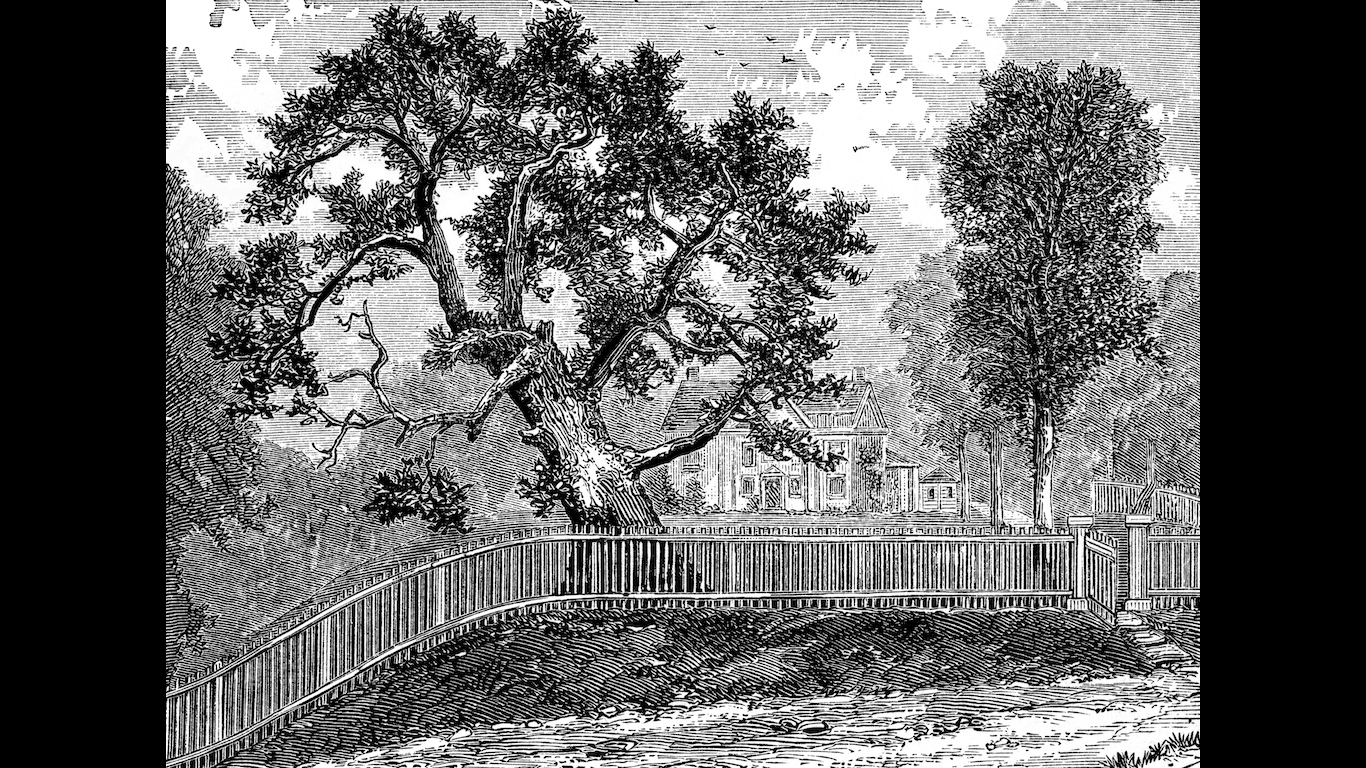
7. Connecticut
> State tree(s): The Charter Oak
> Scientific name: Quercus albus
> Maximum height: 100 feet
> Named the state tree in: 1947
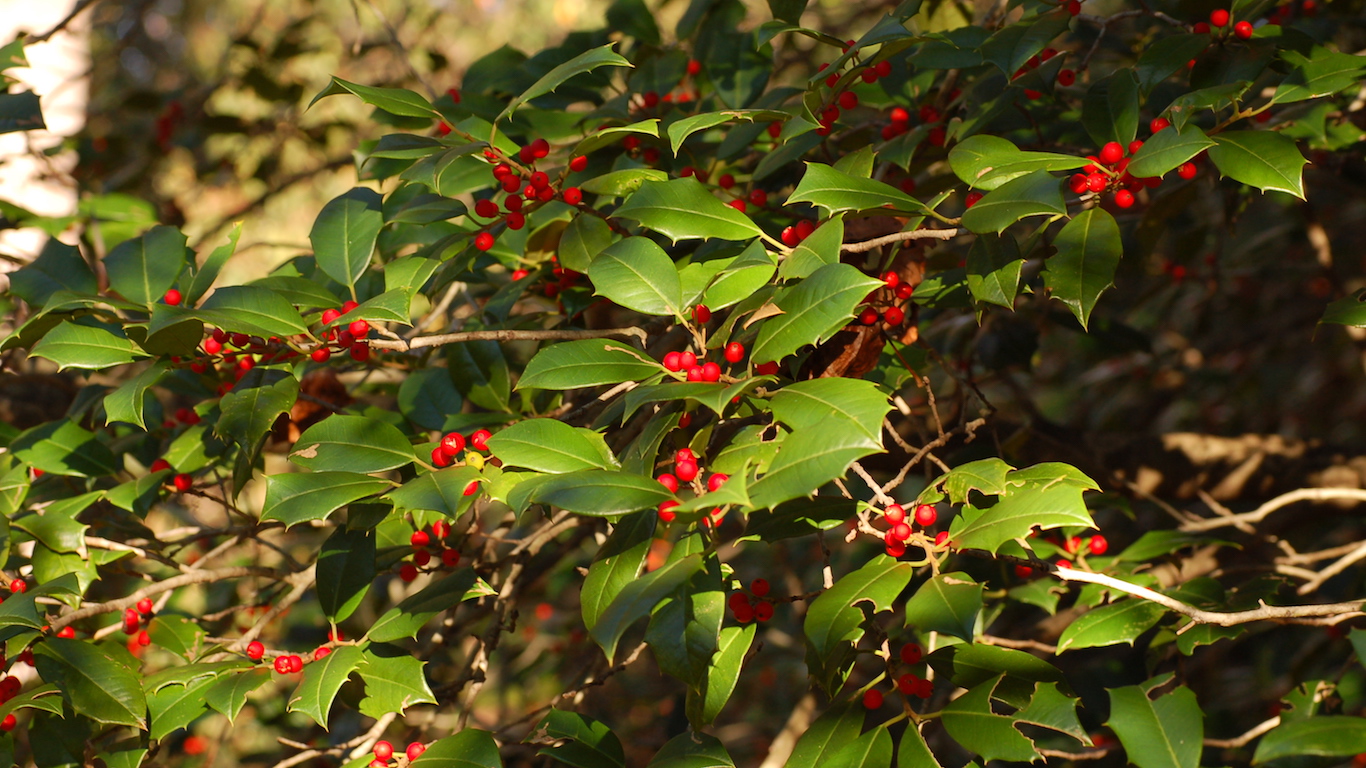
8. Delaware
> State tree(s): American Holly
> Scientific name: Ilex opaca Alton
> Maximum height: 30 feet
> Named the state tree in: 1939
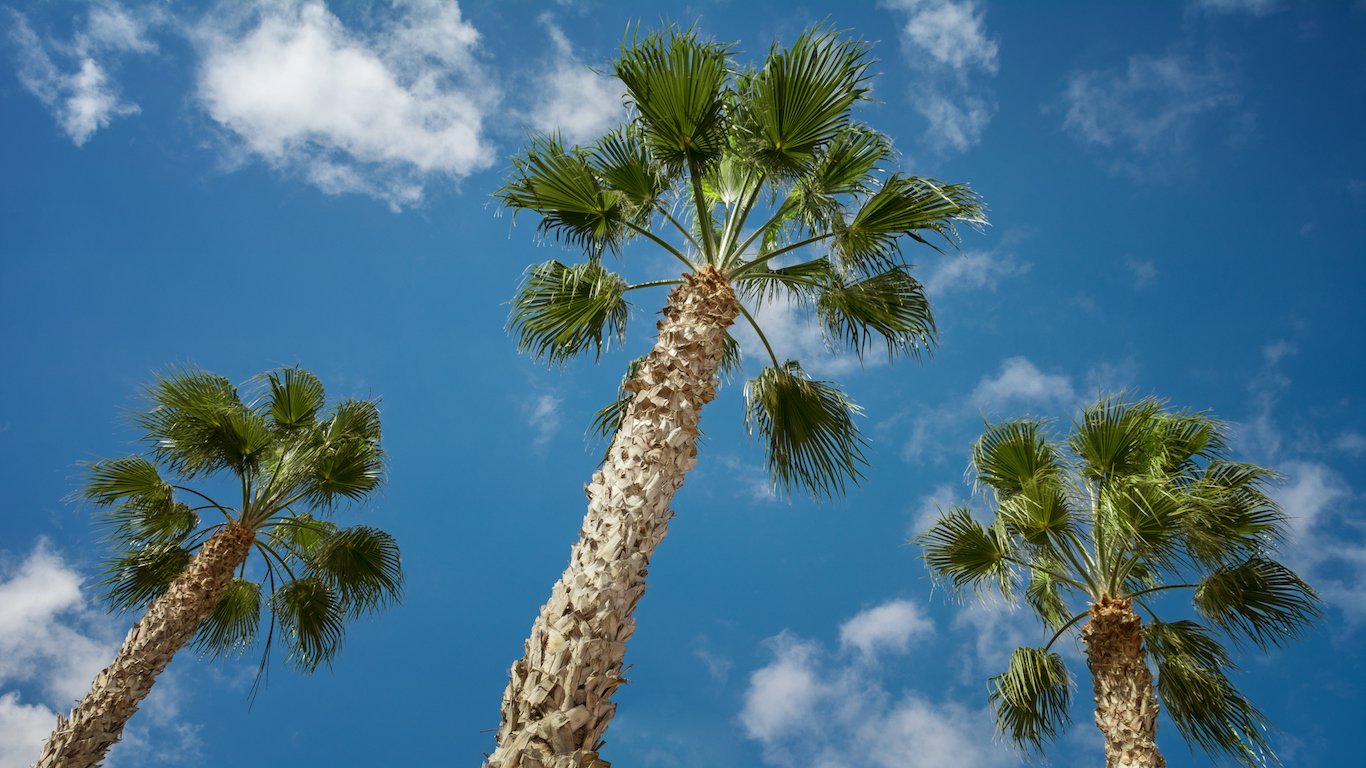
9. Florida
> State tree(s): Sabal Palm
> Scientific name: Sabal palmetto
> Maximum height: 20 feet
> Named the state tree in: 1953
[in-text-ad-2]
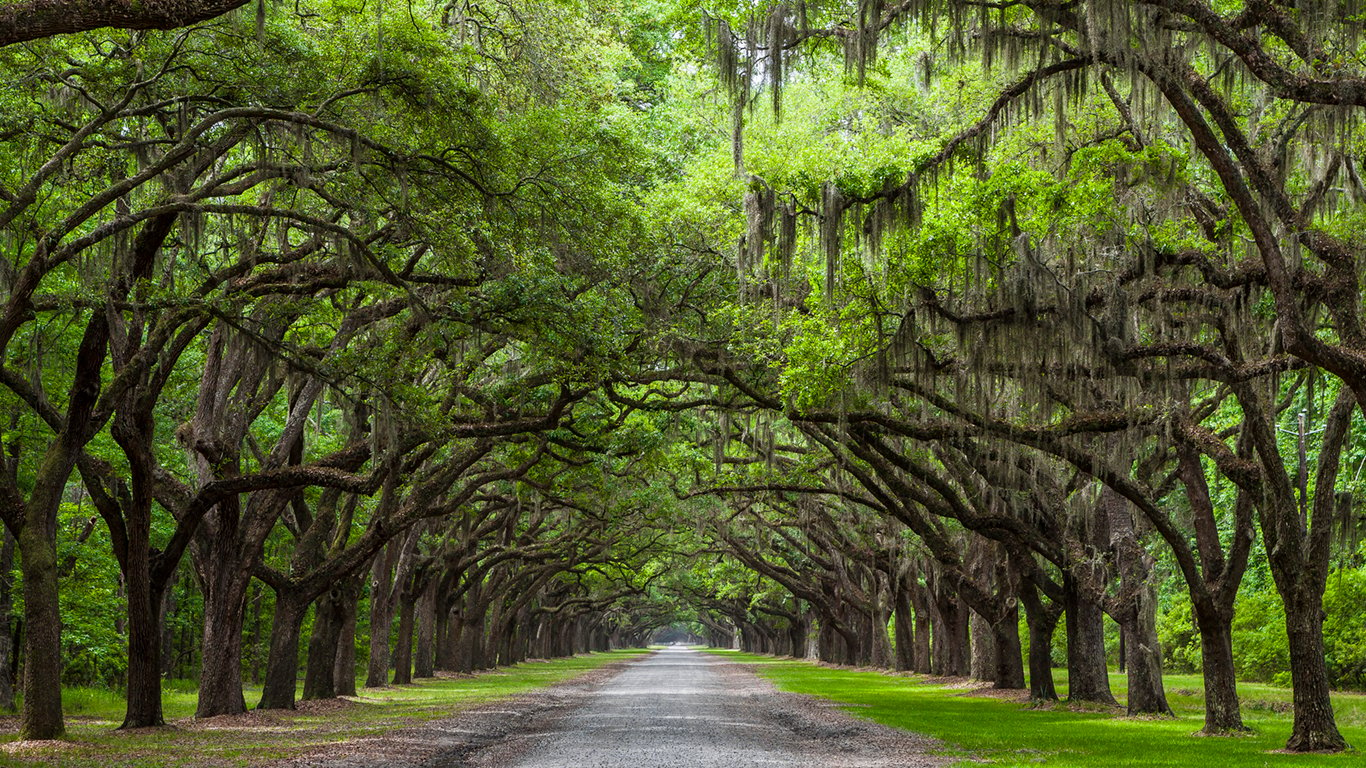
10. Georgia
> State tree(s): Live Oak
> Scientific name: Quercus virginiana
> Maximum height: 80 feet
> Named the state tree in: 1937
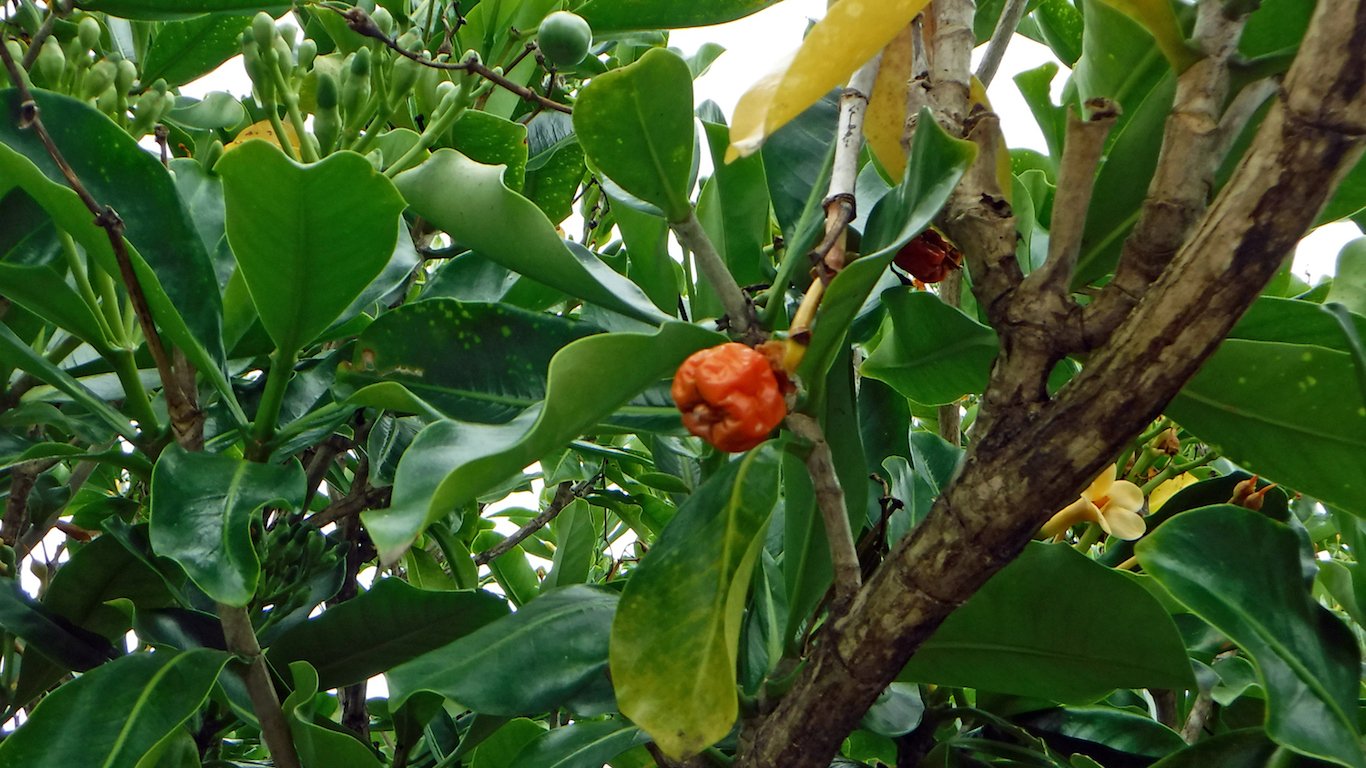
11. Hawaii
> State tree(s): Kukui
> Scientific name: Aleurites moluccana
> Maximum height: 60 feet
> Named the state tree in: 1959
[in-text-ad]
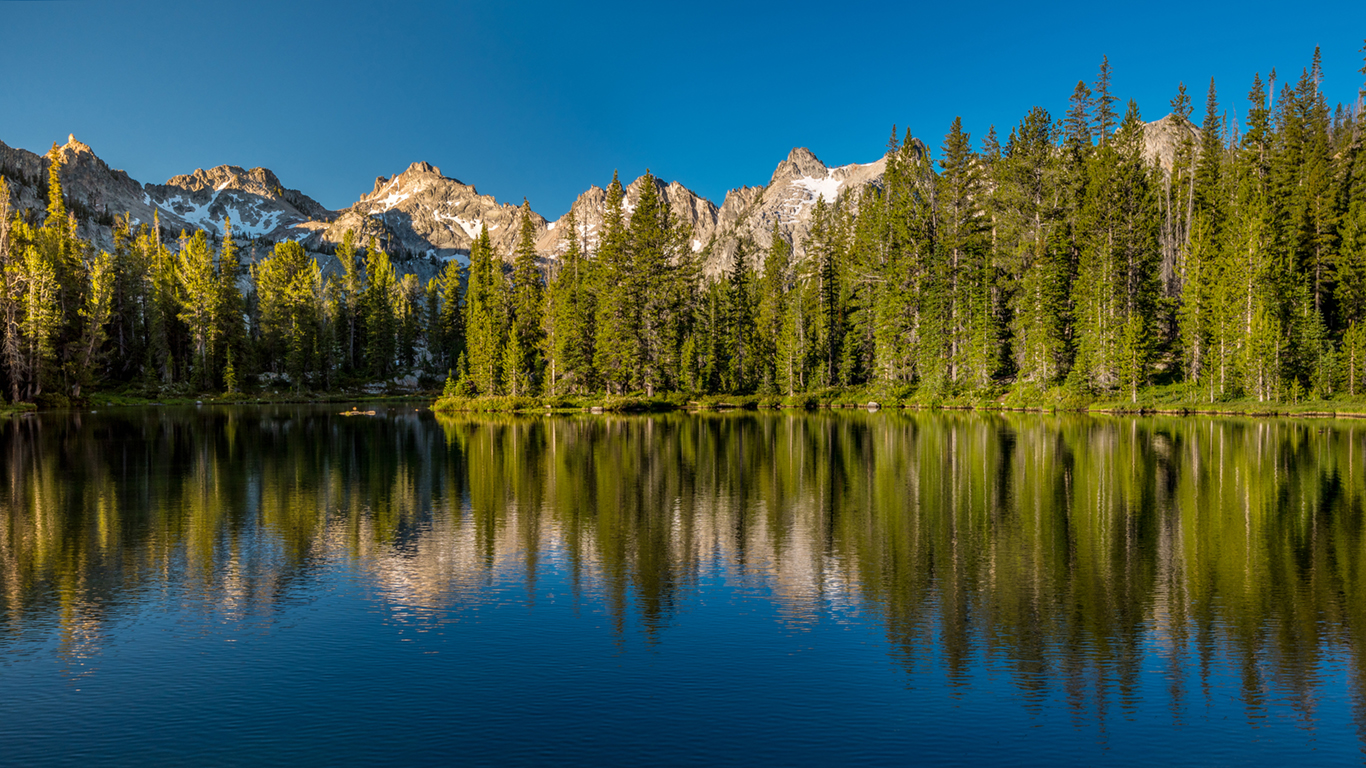
12. Idaho
> State tree(s): Western White Pine
> Scientific name: Pinus monticola pinaceae
> Maximum height: 175 feet
> Named the state tree in: 1935
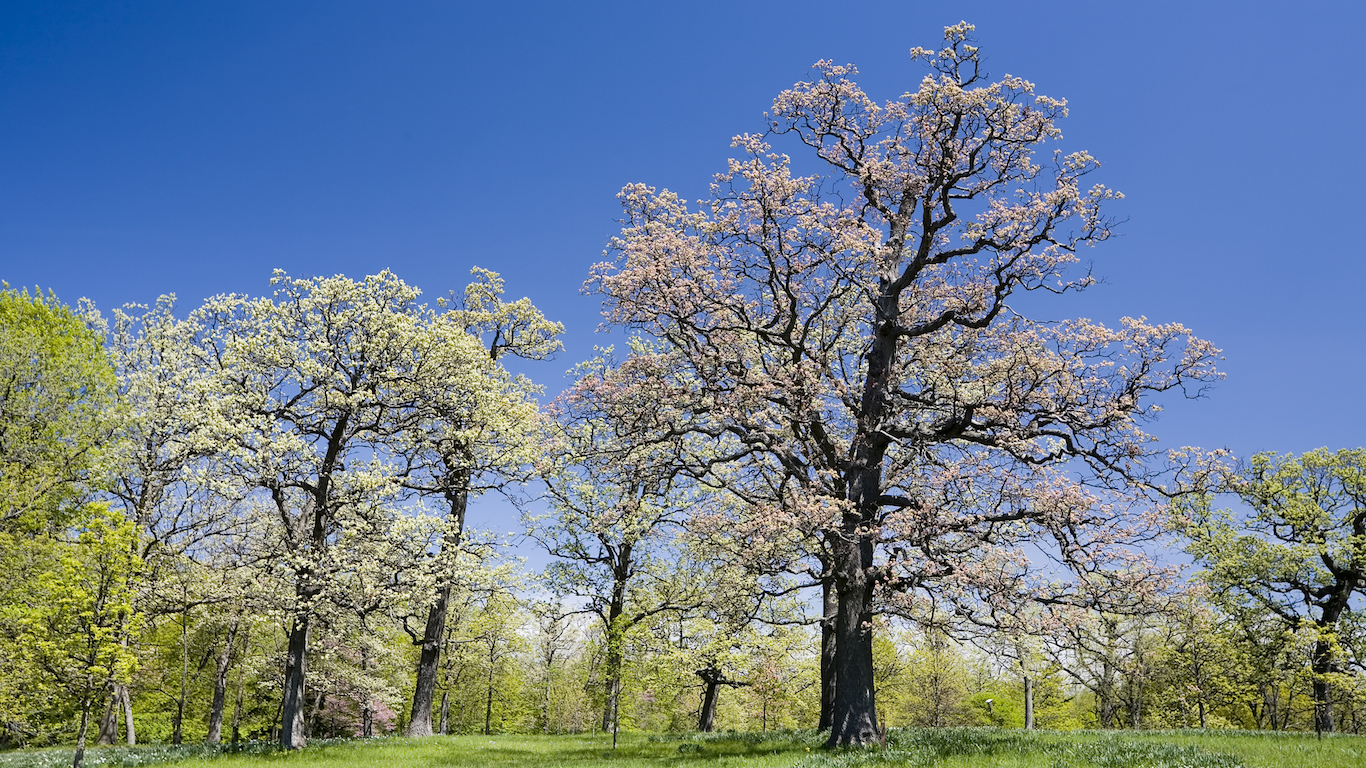
13. Illinois
> State tree(s): White Oak
> Scientific name: Quercus alba
> Maximum height: 100 feet
> Named the state tree in: 1973
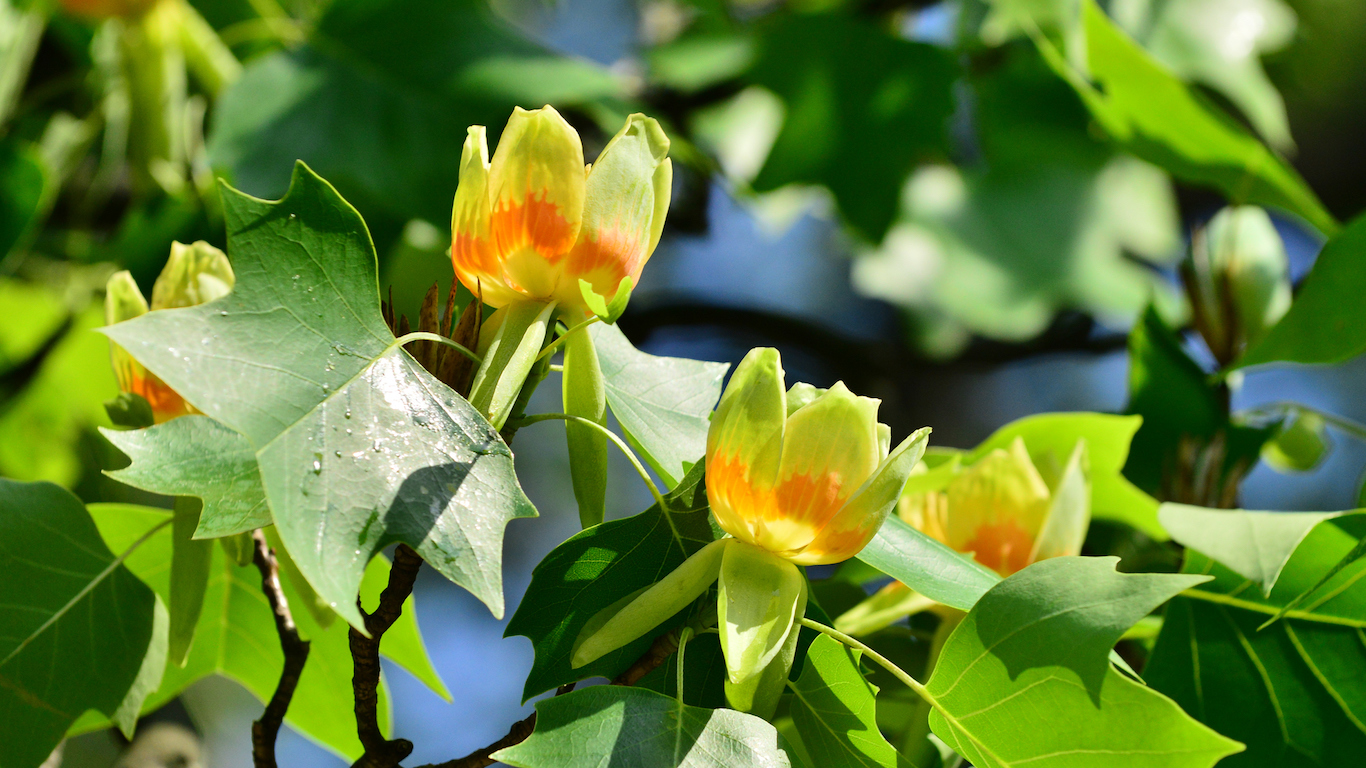
14. Indiana
> State tree(s): Tulip Poplar
> Scientific name: Liriodendron tulipifera
> Maximum height: 90 feet
> Named the state tree in: 1931
[in-text-ad-2]
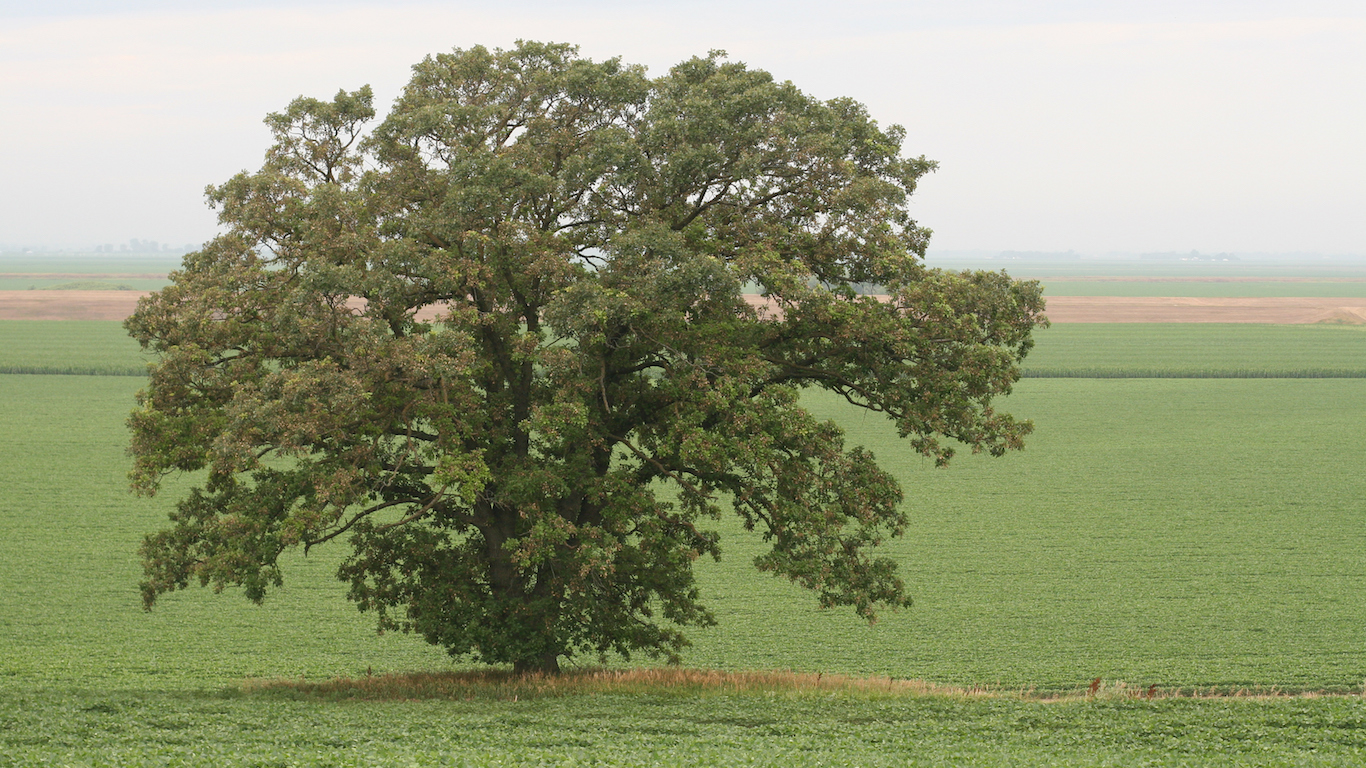
15. Iowa
> State tree(s): Oak
> Scientific name: Quercus macrocarpa
> Maximum height: 100 feet
> Named the state tree in: 1961
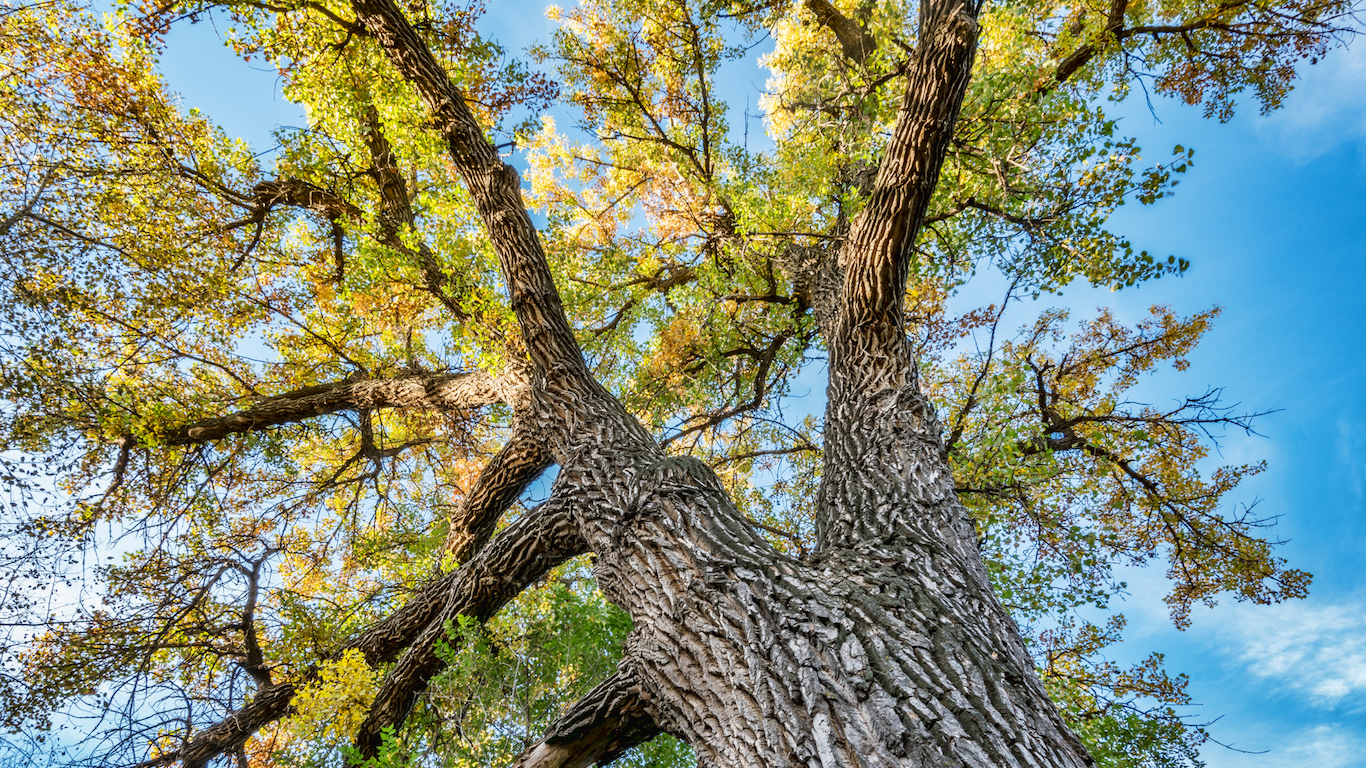
16. Kansas
> State tree(s): Cottonwood
> Scientific name: Populus deltoides
> Maximum height: 190 feet
> Named the state tree in: 1937
[in-text-ad]
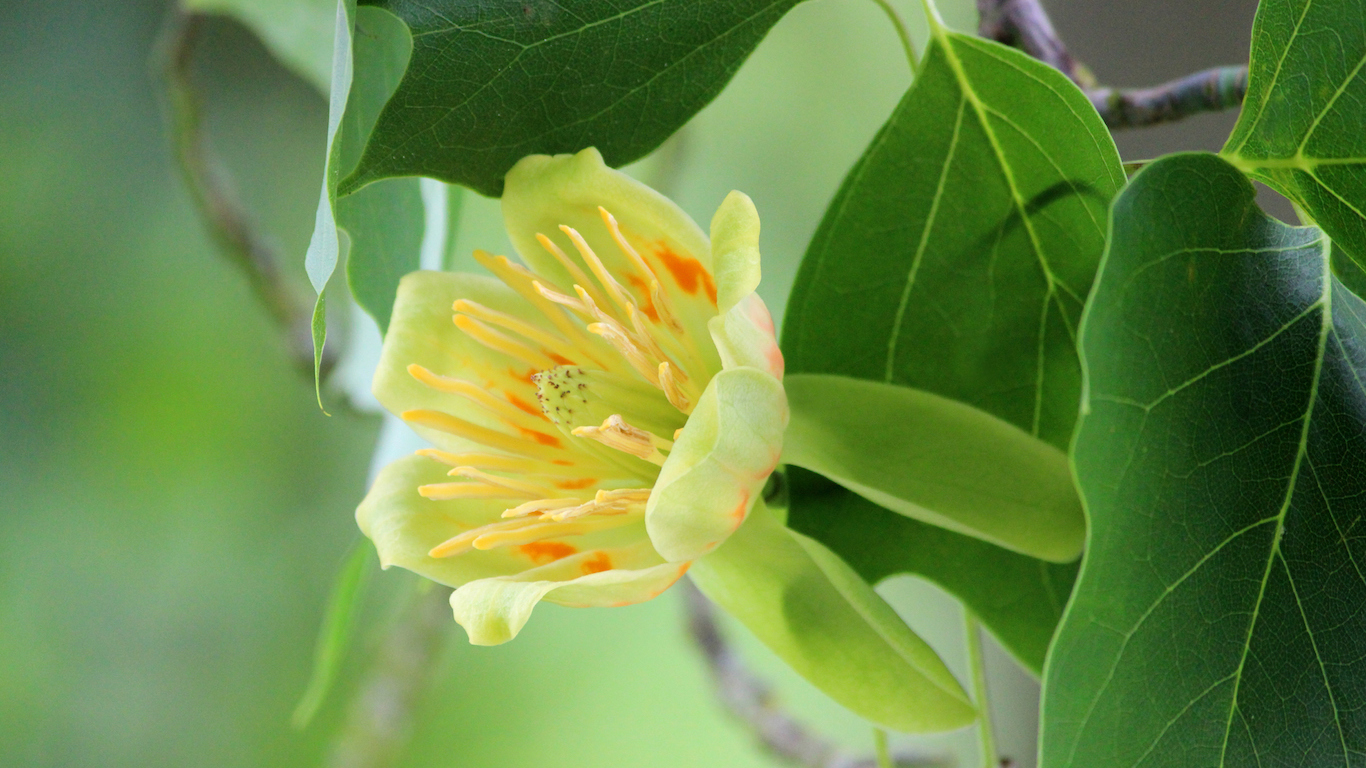
17. Kentucky
> State tree(s): Tulip Poplar
> Scientific name: Liriodendron tulipifera
> Maximum height: 90 feet
> Named the state tree in: 1994
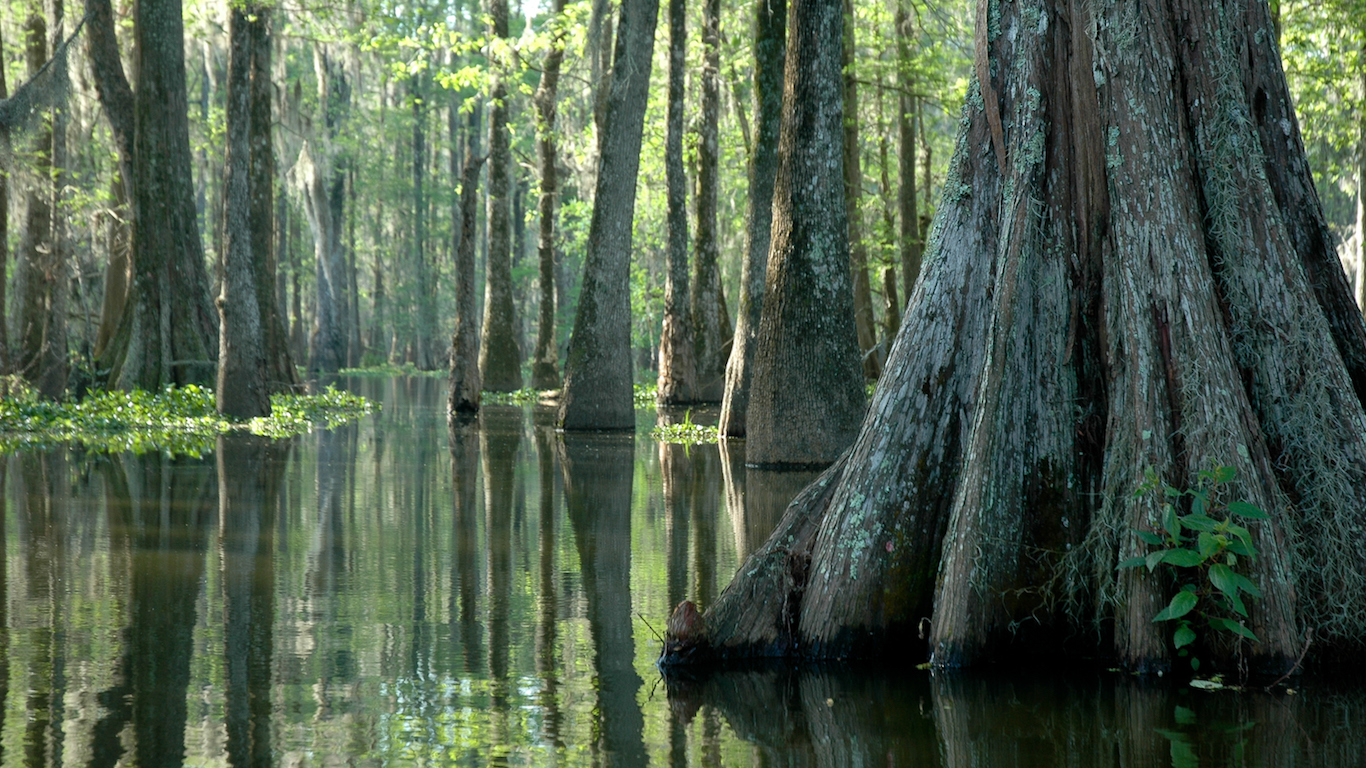
18. Louisiana
> State tree(s): Bald Cypress
> Scientific name: Taxodium distichum
> Maximum height: 100 feet
> Named the state tree in: 1963
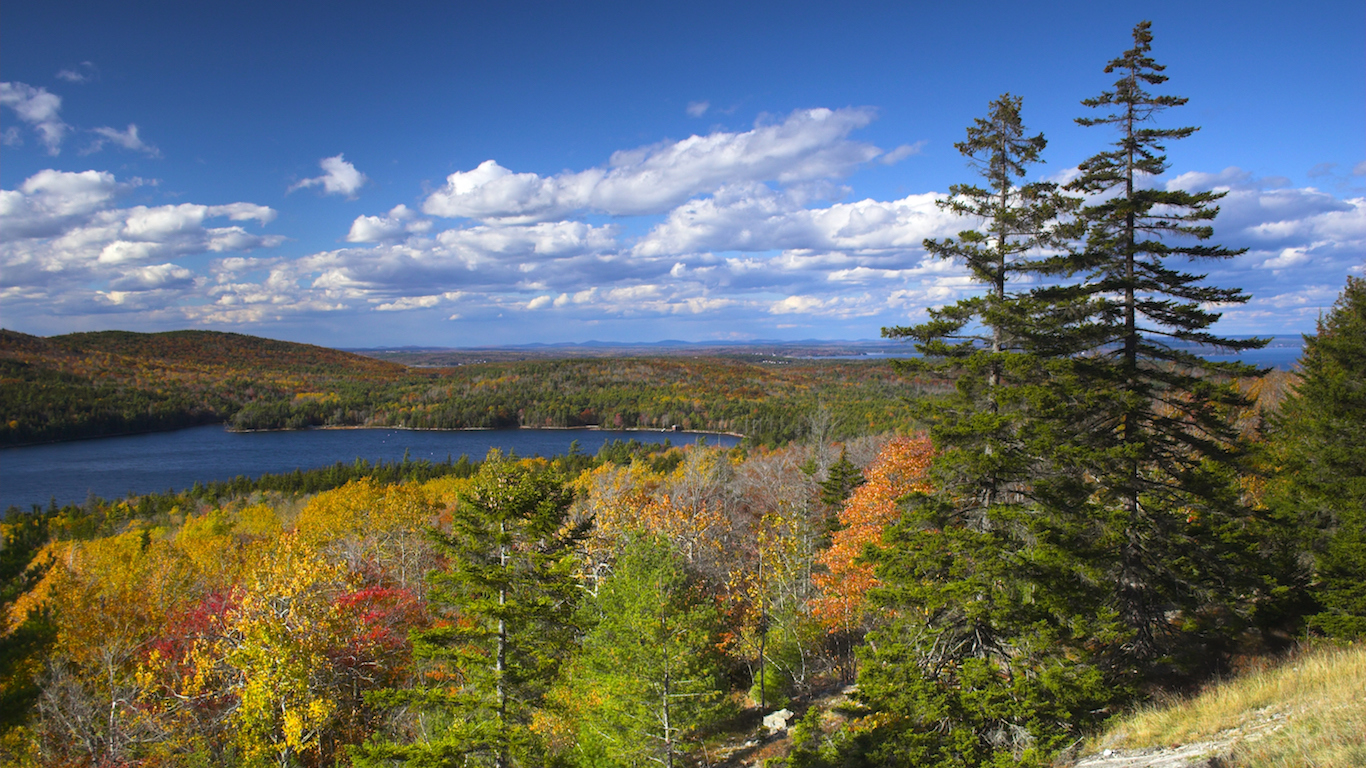
19. Maine
> State tree(s): White Pine
> Scientific name: Pinus strobus
> Maximum height: 100+ feet
> Named the state tree in: 1945
[in-text-ad-2]
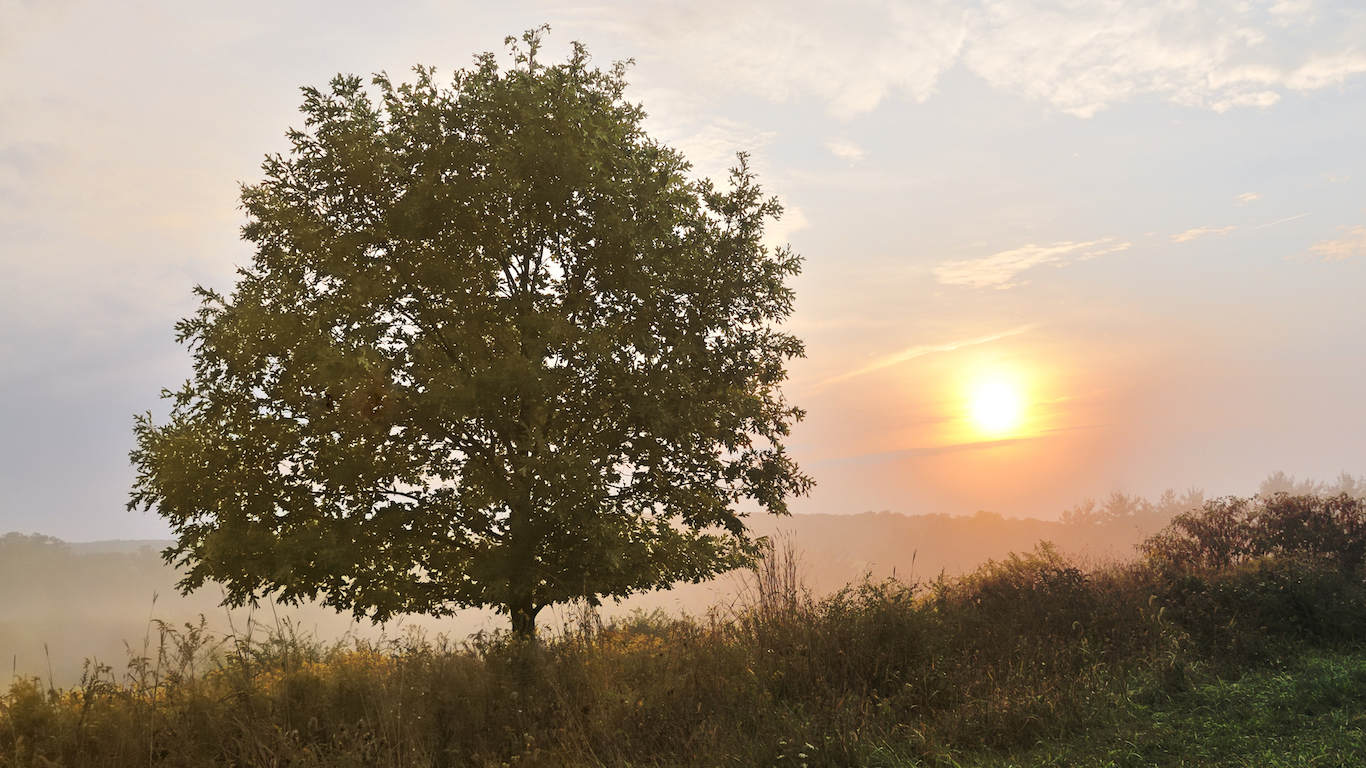
20. Maryland
> State tree(s): White Oak
> Scientific name: Quercus alba
> Maximum height: 100 feet
> Named the state tree in: 1941
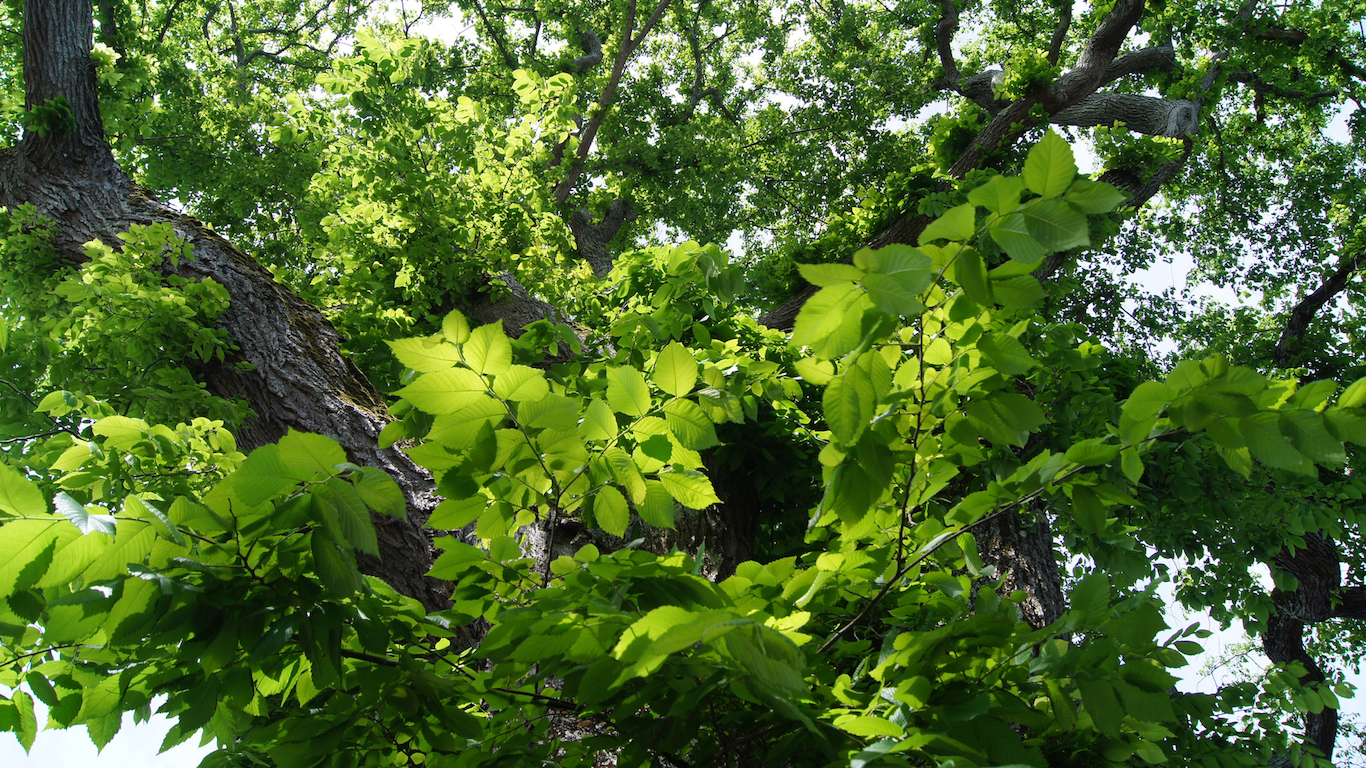
21. Massachusetts
> State tree(s): American Elm
> Scientific name: Ulmus americana
> Maximum height: 90 feet
> Named the state tree in: 1941
[in-text-ad]
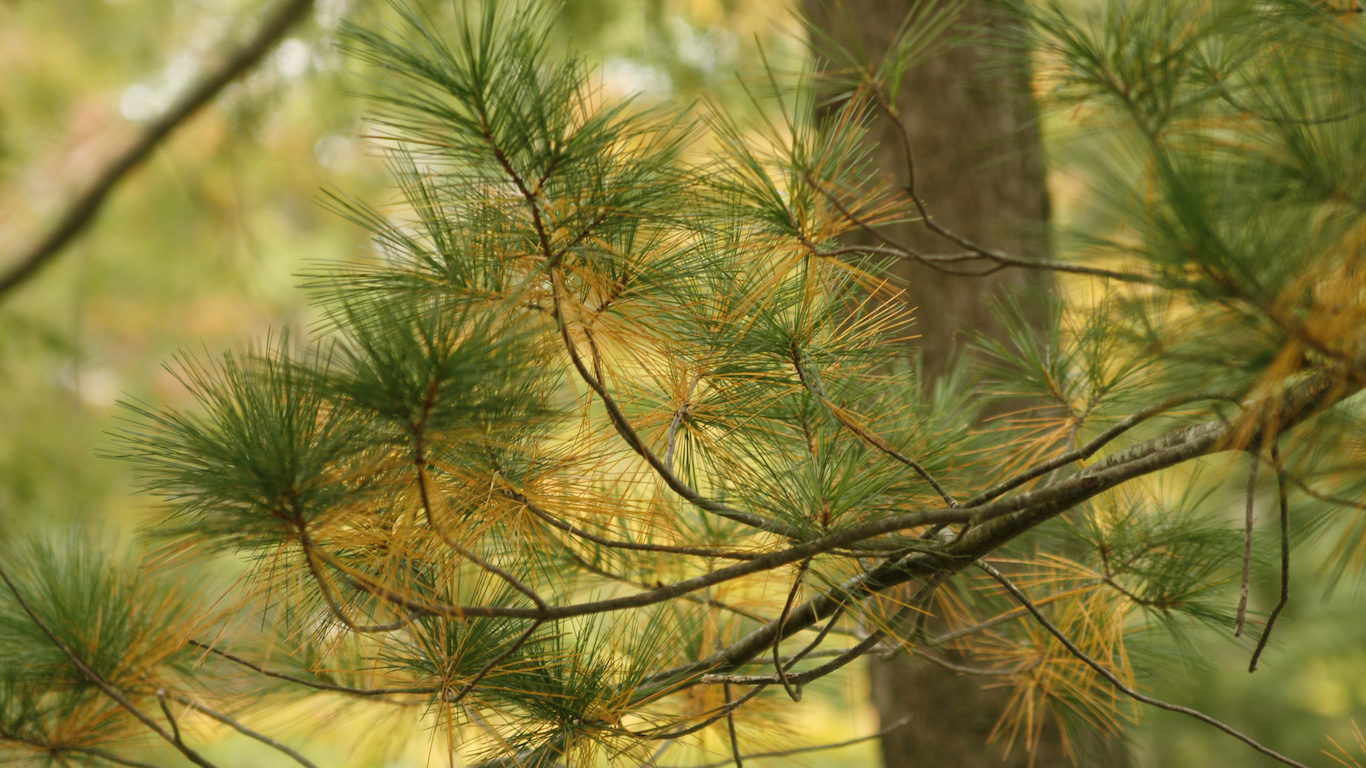
22. Michigan
> State tree(s): Eastern White Pine
> Scientific name: Pinus strobus
> Maximum height: 100+ feet
> Named the state tree in: 1955
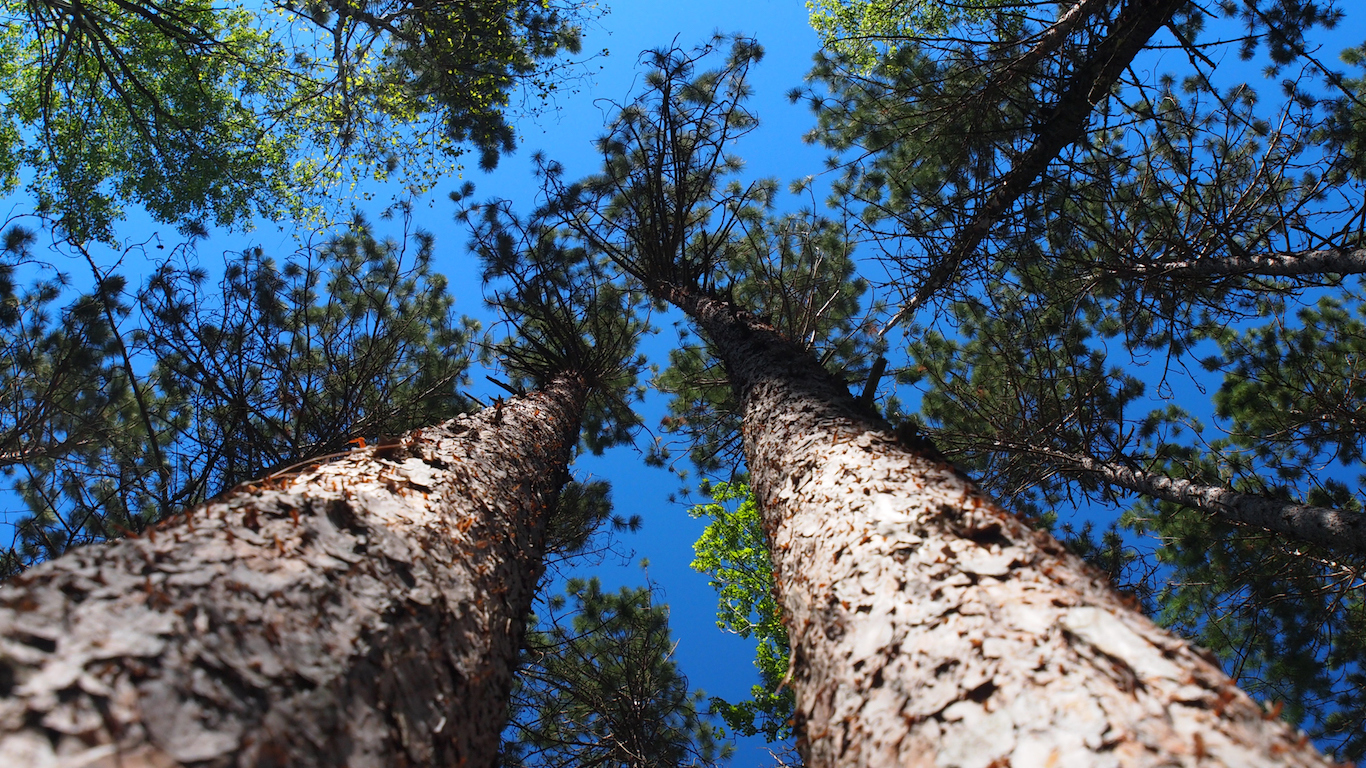
23. Minnesota
> State tree(s): Red Pine
> Scientific name: Pinus resinosa
> Maximum height: 90 feet
> Named the state tree in: 1953
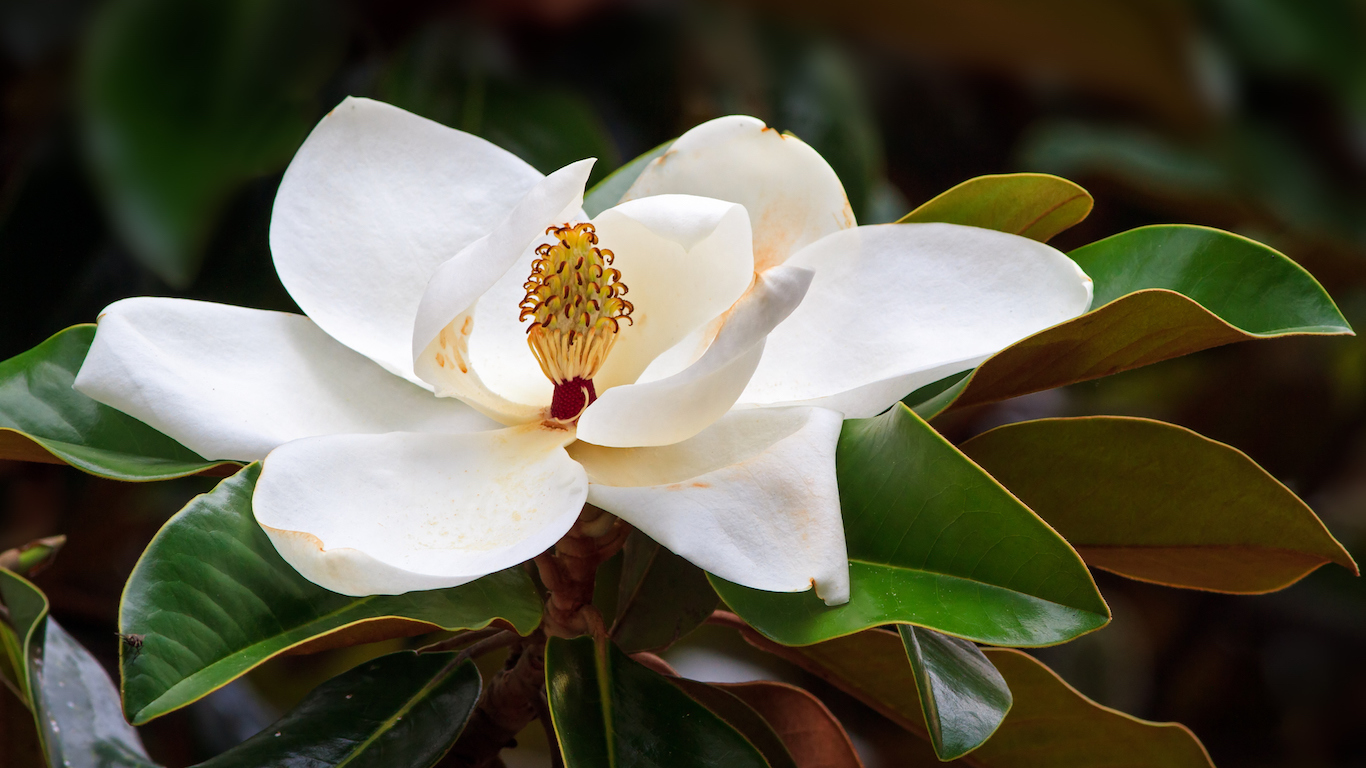
24. Mississippi
> State tree(s): Magnolia
> Scientific name: Magnolia grandiflora
> Maximum height: 80 feet
> Named the state tree in: 1952
[in-text-ad-2]
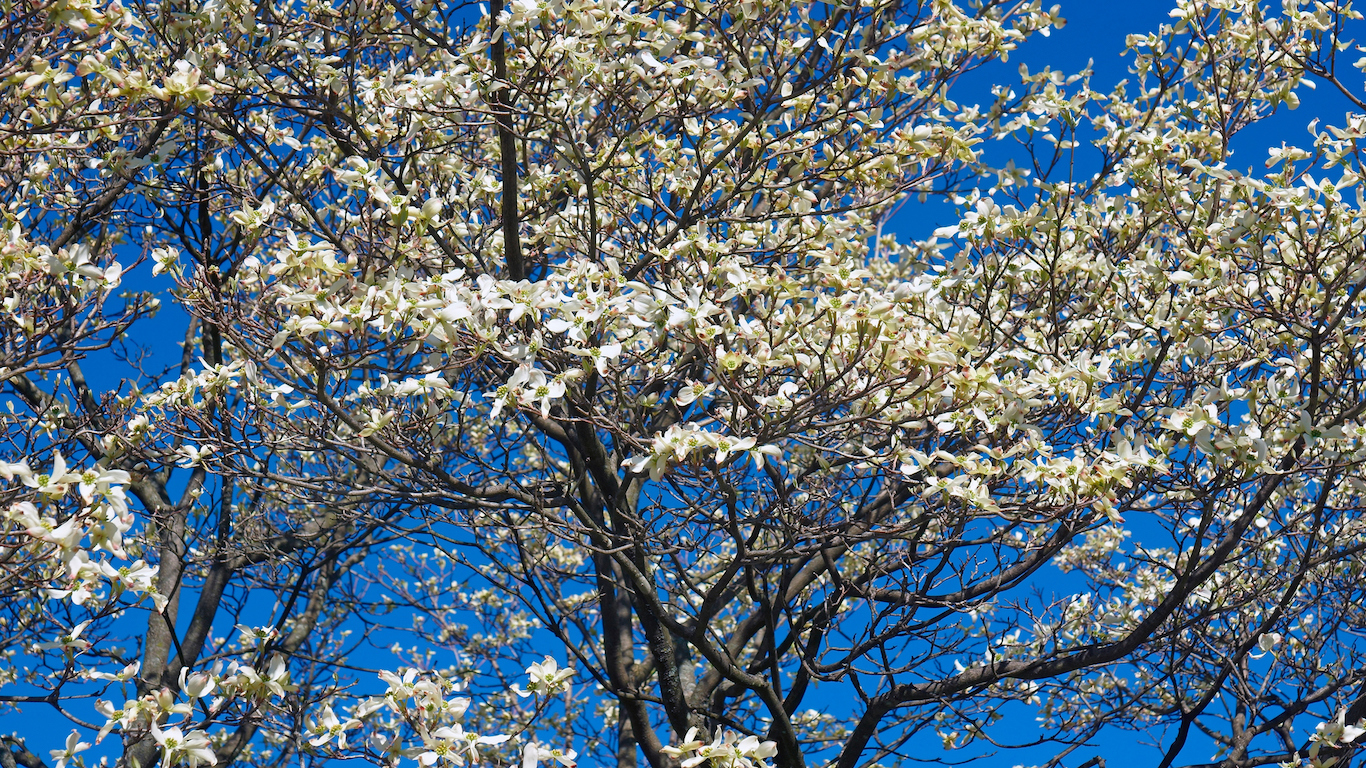
25. Missouri
> State tree(s): Flowering Dogwood
> Scientific name: Cornus florida
> Maximum height: 40 feet
> Named the state tree in: 1955
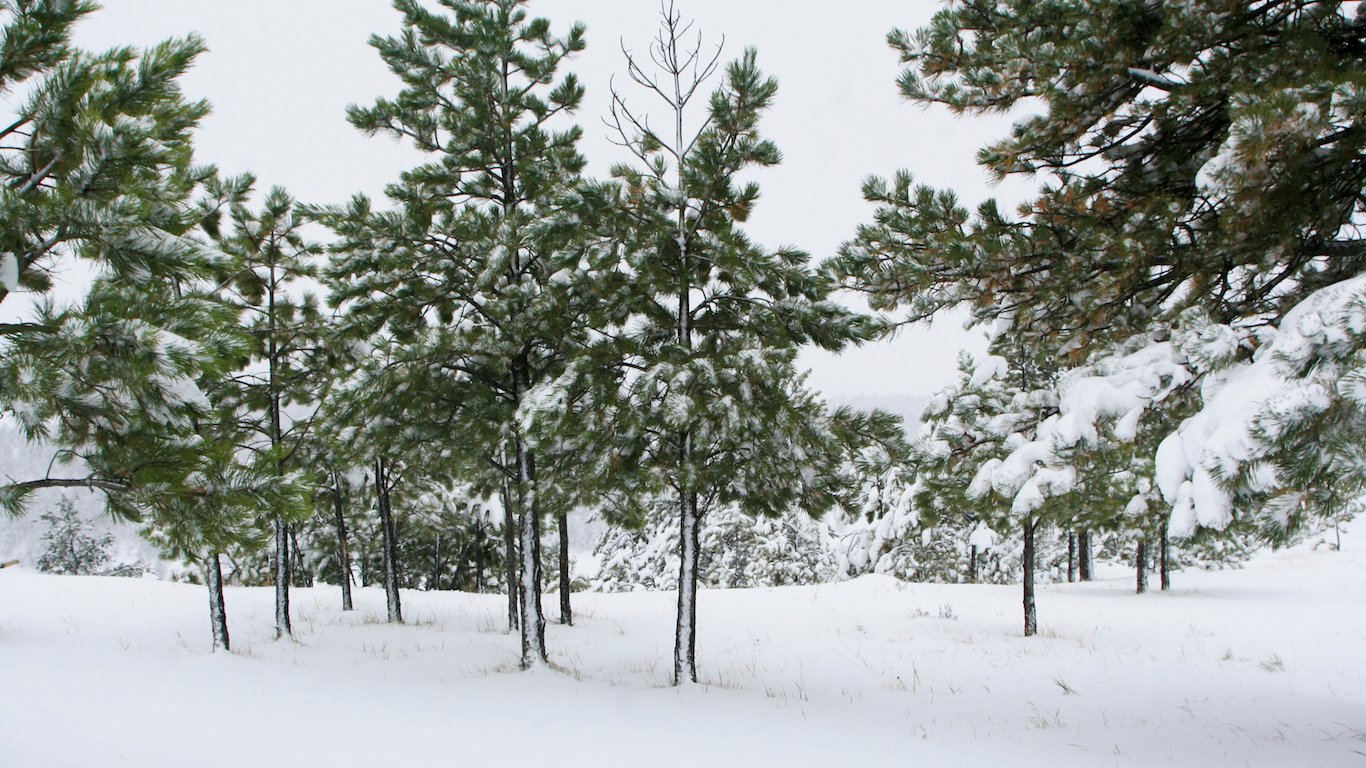
26. Montana
> State tree(s): Ponderosa Pine
> Scientific name: Pinus ponderosa
> Maximum height: 200+ feet
> Named the state tree in: 1949
[in-text-ad]
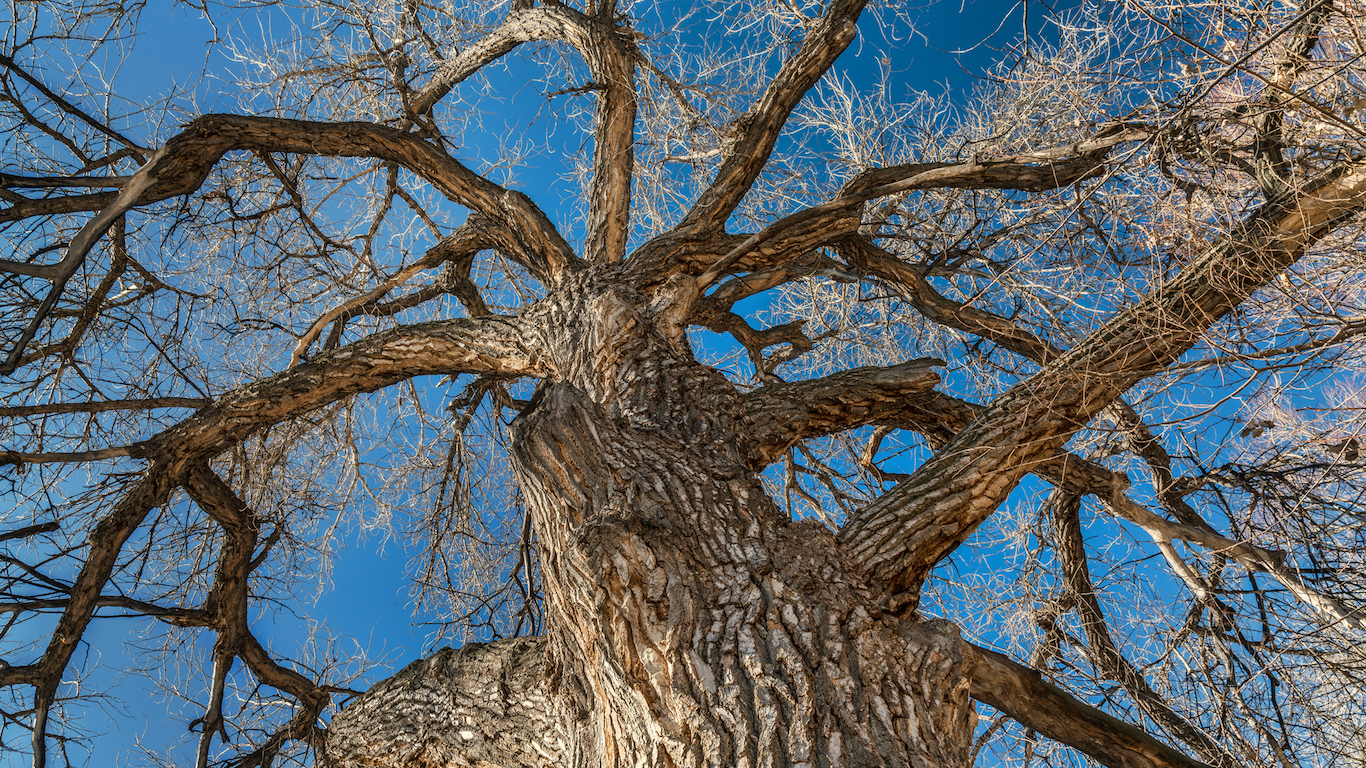
27. Nebraska
> State tree(s): Cottonwood
> Scientific name: Populus deltoides
> Maximum height: 190 feet
> Named the state tree in: 1972
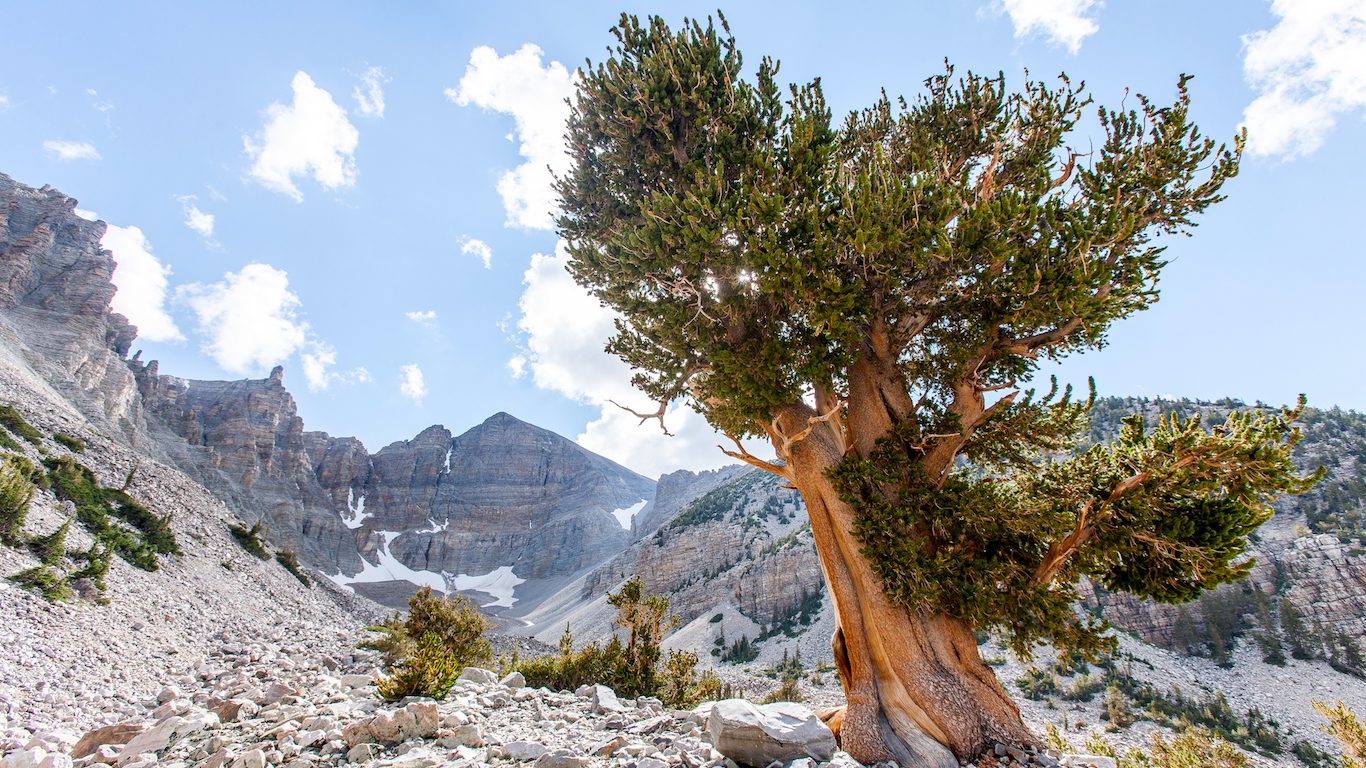
28. Nevada
> State tree(s): Single-Leaf Piñon and Bristlecone Pine
> Scientific name: Pinus monophylla & Pinus longaeva
> Maximum height: 50 feet
> Named the state tree in: 1987
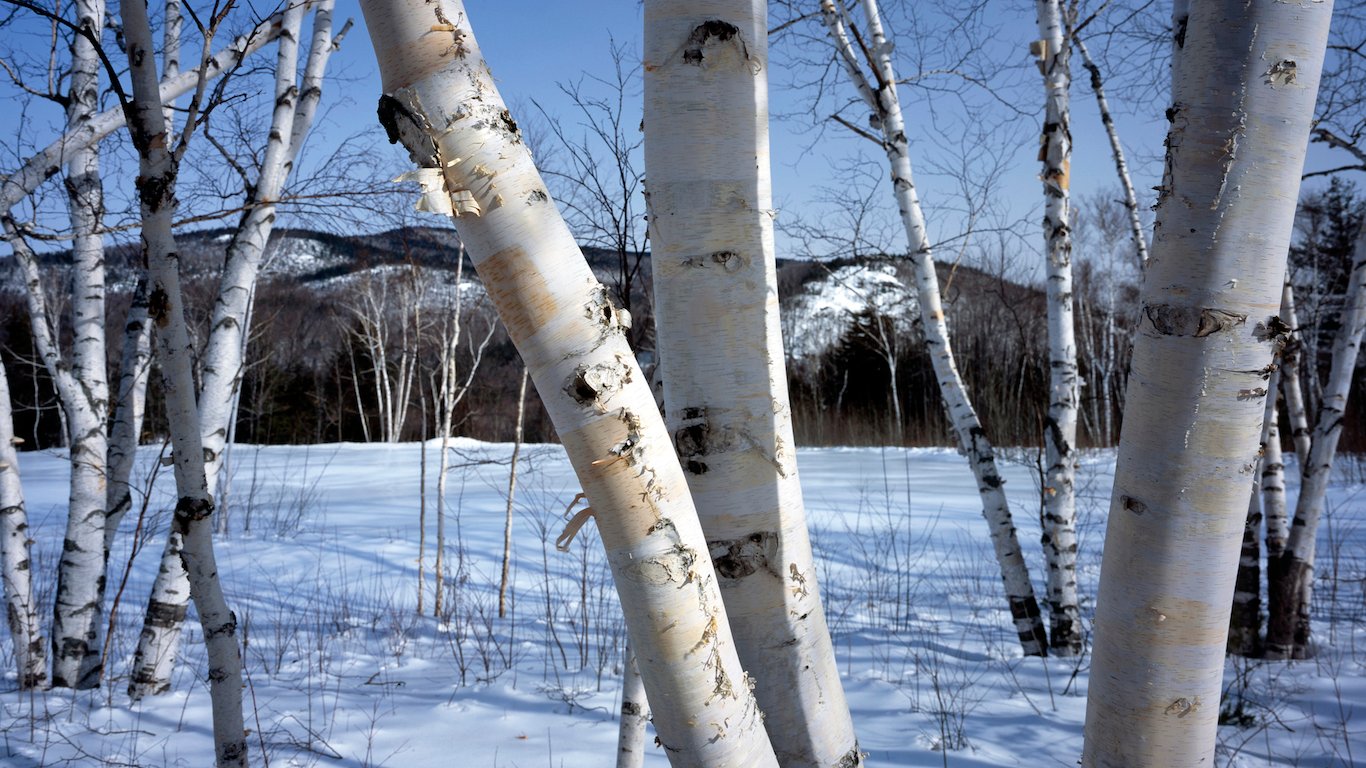
29. New Hampshire
> State tree(s): White Birch
> Scientific name: Betula papyrifera
> Maximum height: 70 feet
> Named the state tree in: 1947
[in-text-ad-2]
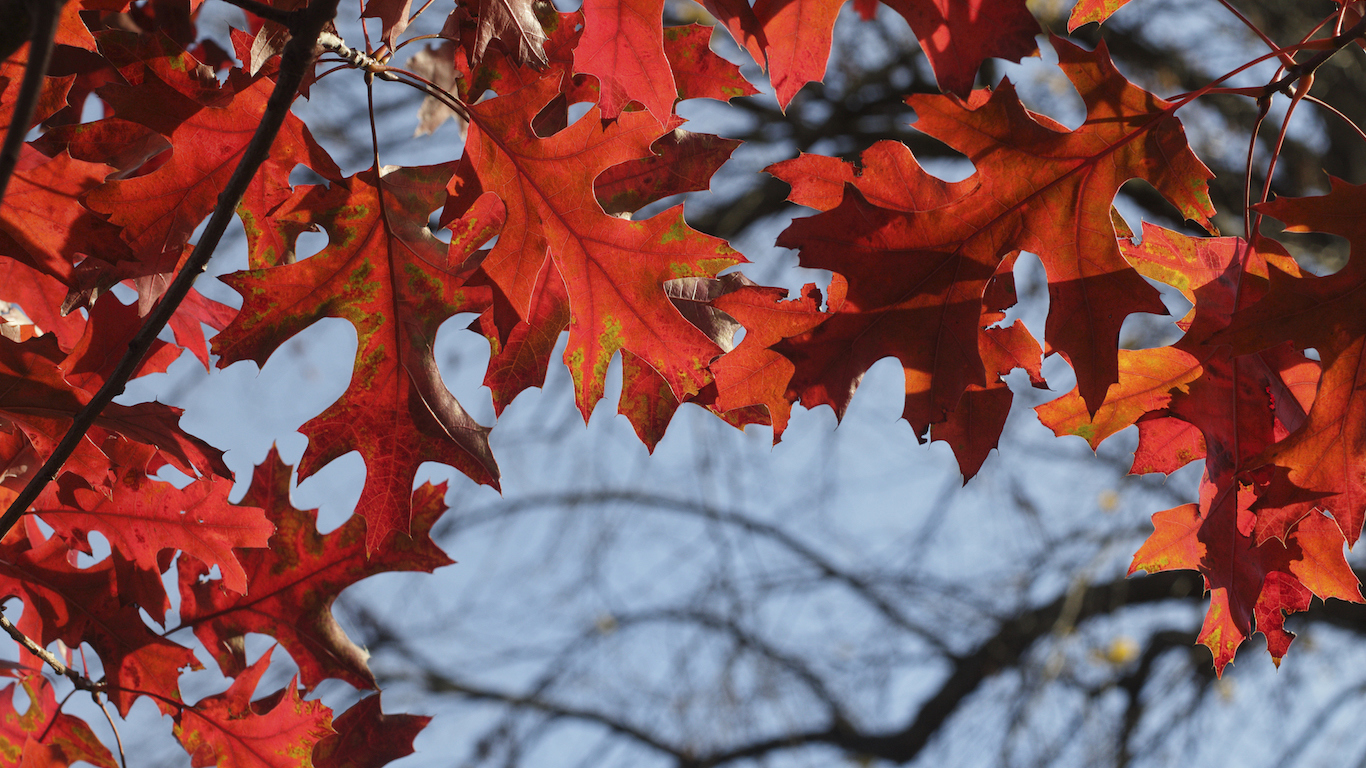
30. New Jersey
> State tree(s): Northern Red Oak and Dogwood
> Scientific name: Quercus borealis maxima and Cornus
> Maximum height: 90 feet
> Named the state tree in: 1950
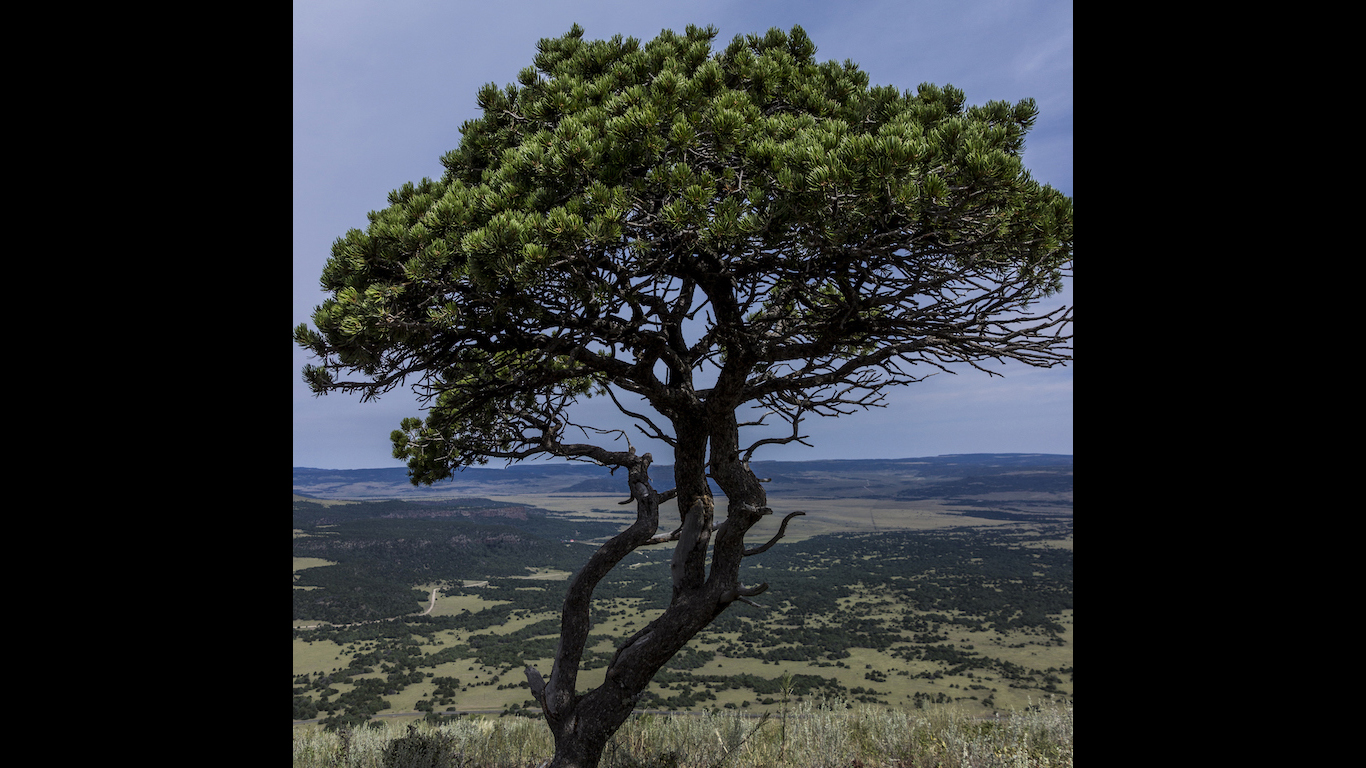
31. New Mexico
> State tree(s): Piñon Pine
> Scientific name: Pinus edulis
> Maximum height: 35 feet
> Named the state tree in: 1948
[in-text-ad]
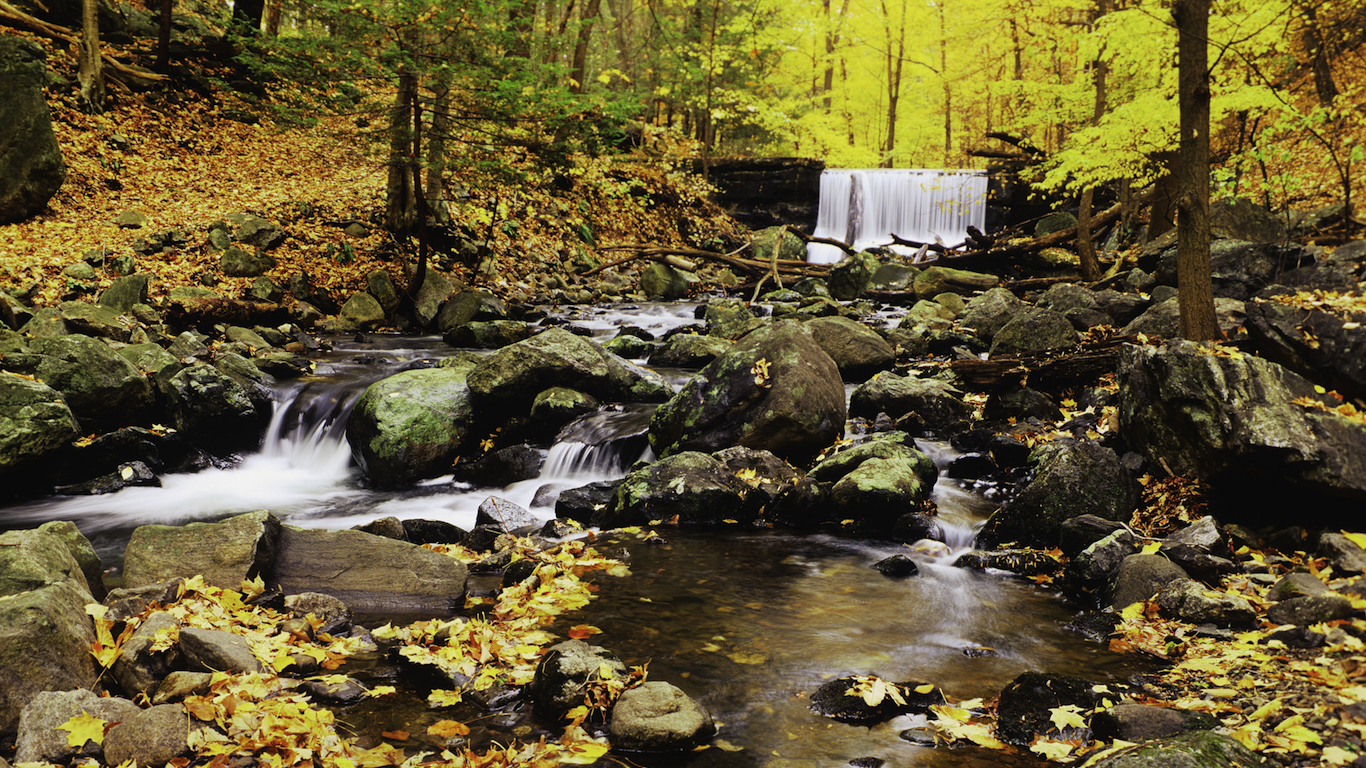
32. New York
> State tree(s): Sugar Maple
> Scientific name: Acer saccharum
> Maximum height: 115 feet
> Named the state tree in: 1956
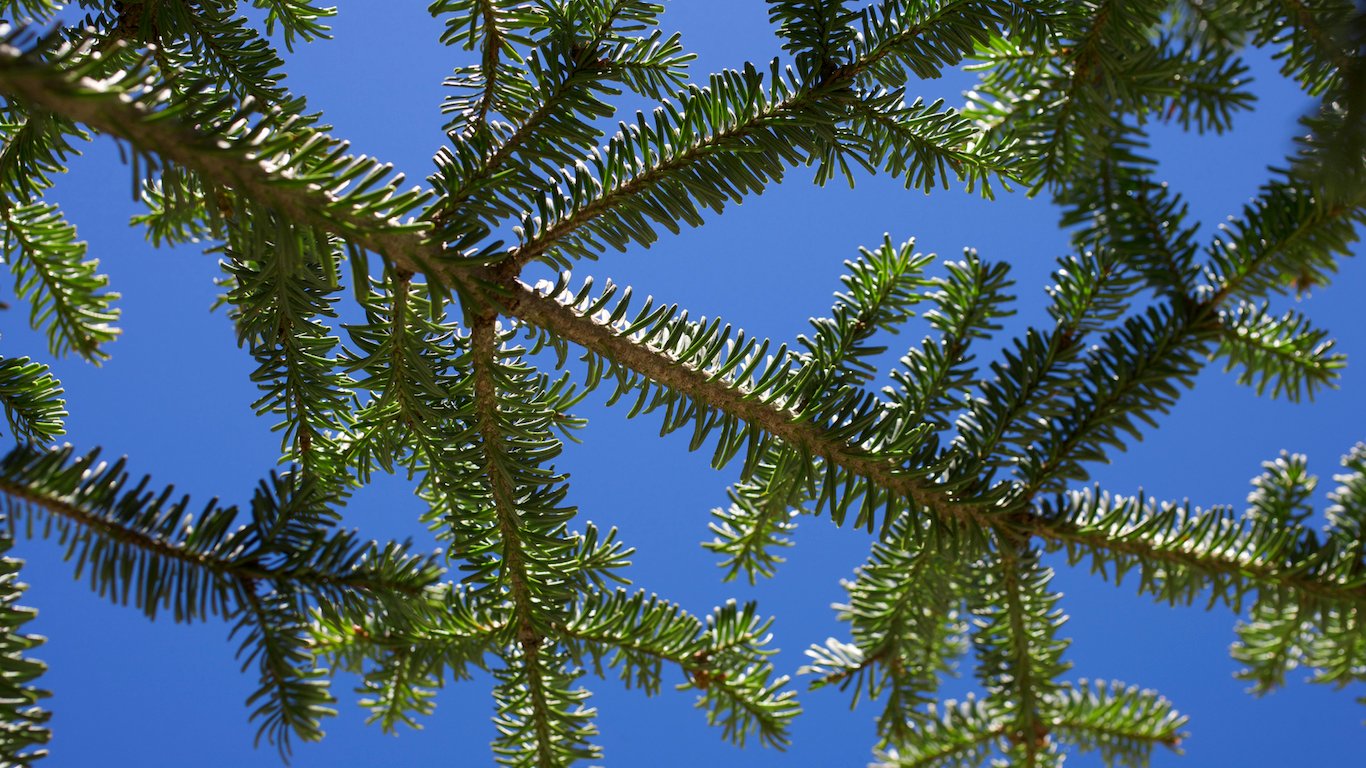
33. North Carolina
> State tree(s): Fraser Fir and Pine Tree
> Scientific name: Abies fraseri and Pinus
> Maximum height: 40 feet
> Named the state tree in: 1963
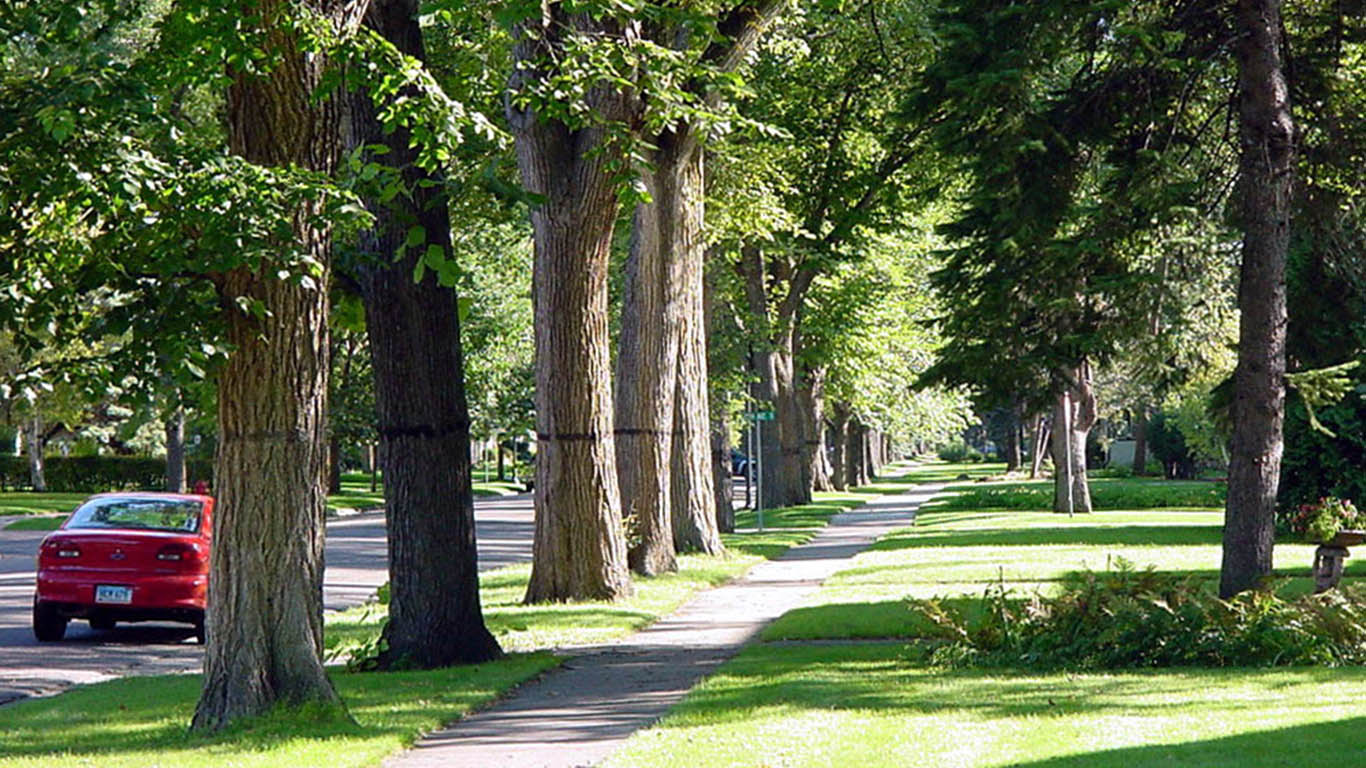
34. North Dakota
> State tree(s): American Elm
> Scientific name: Ulmus americana
> Maximum height: 90 feet
> Named the state tree in: 1947
[in-text-ad-2]
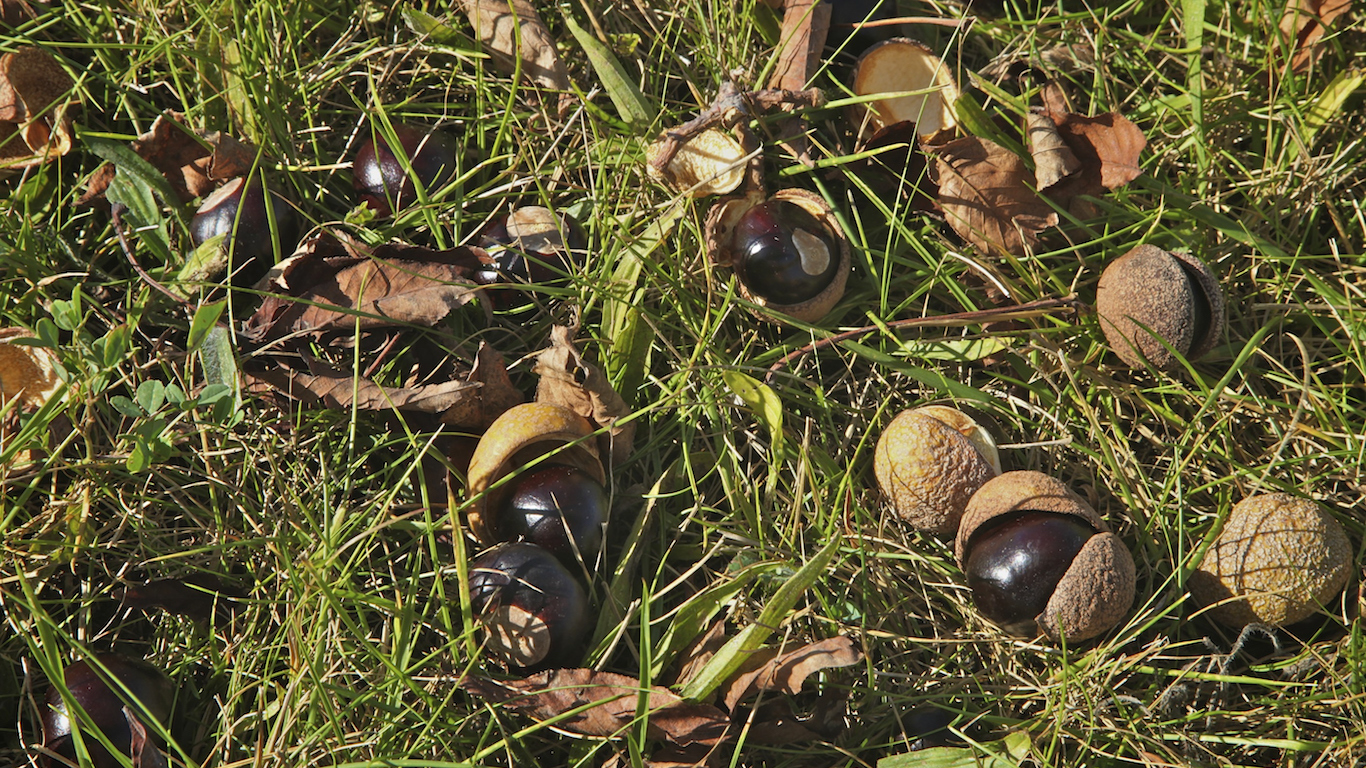
35. Ohio
> State tree(s): Ohio Buckeye
> Scientific name: Aesculus glabra
> Maximum height: 82 feet
> Named the state tree in: 1953
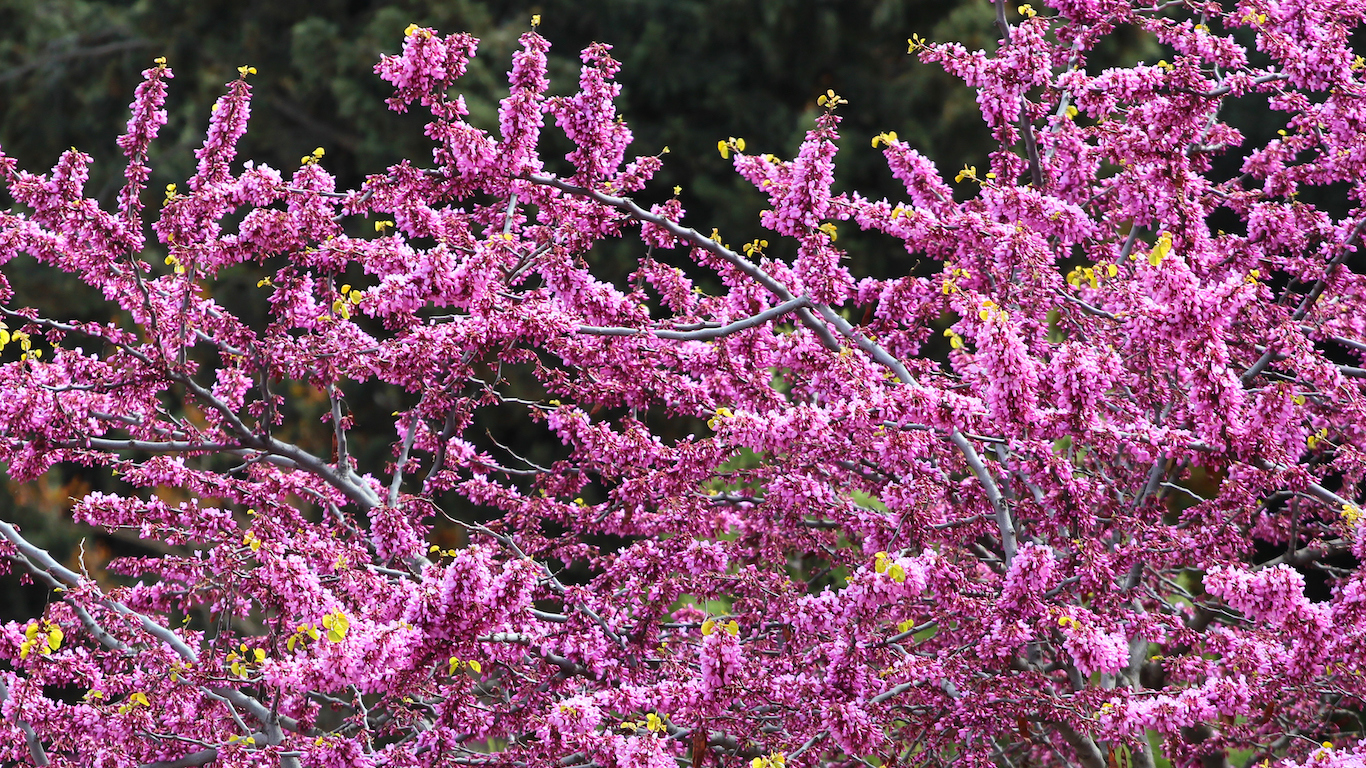
36. Oklahoma
> State tree(s): Redbud
> Scientific name: Cercis canadensis
> Maximum height: 30 feet
> Named the state tree in: 1937
[in-text-ad]

37. Oregon
> State tree(s): Douglas Fir
> Scientific name: Pseudotsuga menziesii
> Maximum height: 325 feet
> Named the state tree in: 1939
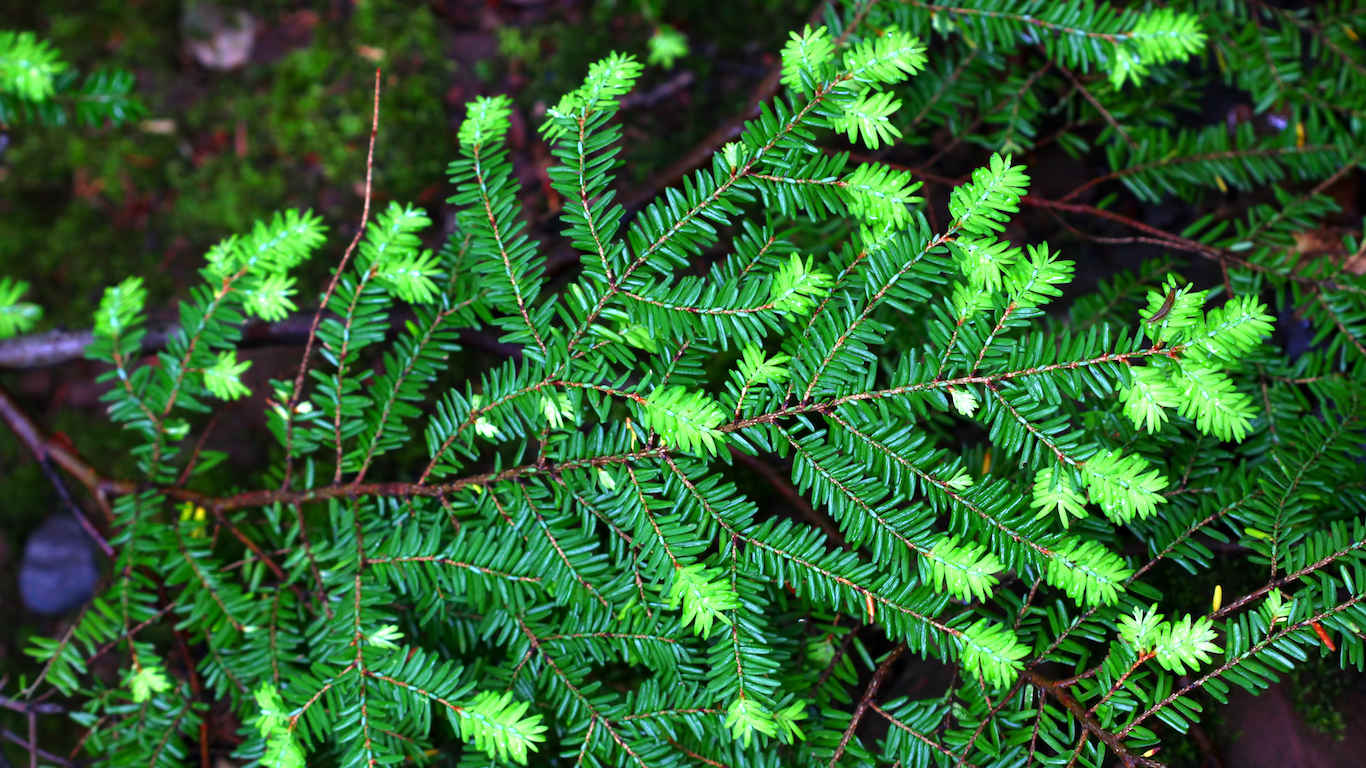
38. Pennsylvania
> State tree(s): Eastern Hemlock
> Scientific name: Tsuga canadensis
> Maximum height: 80 feet
> Named the state tree in: 1931
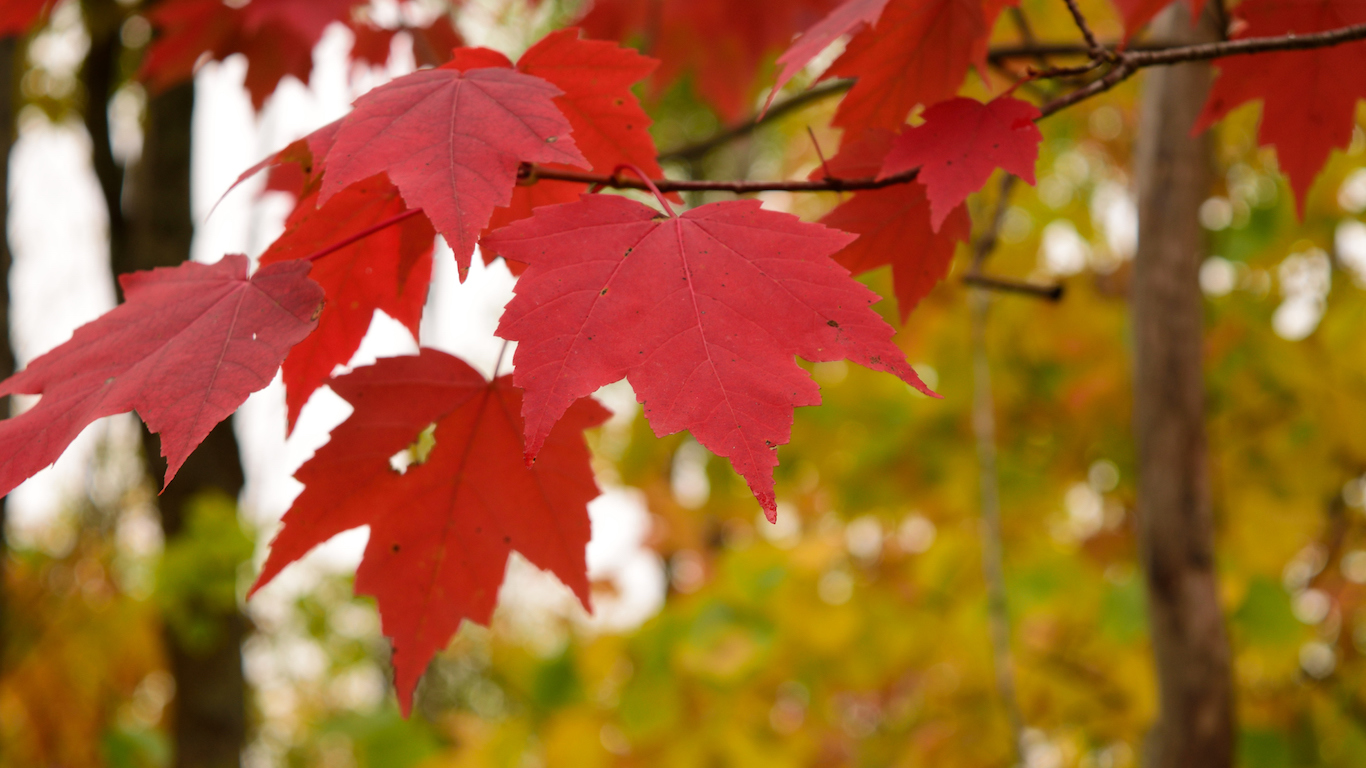
39. Rhode Island
> State tree(s): Red Maple
> Scientific name: Acer rubrum
> Maximum height: 115 feet
> Named the state tree in: 1964
[in-text-ad-2]
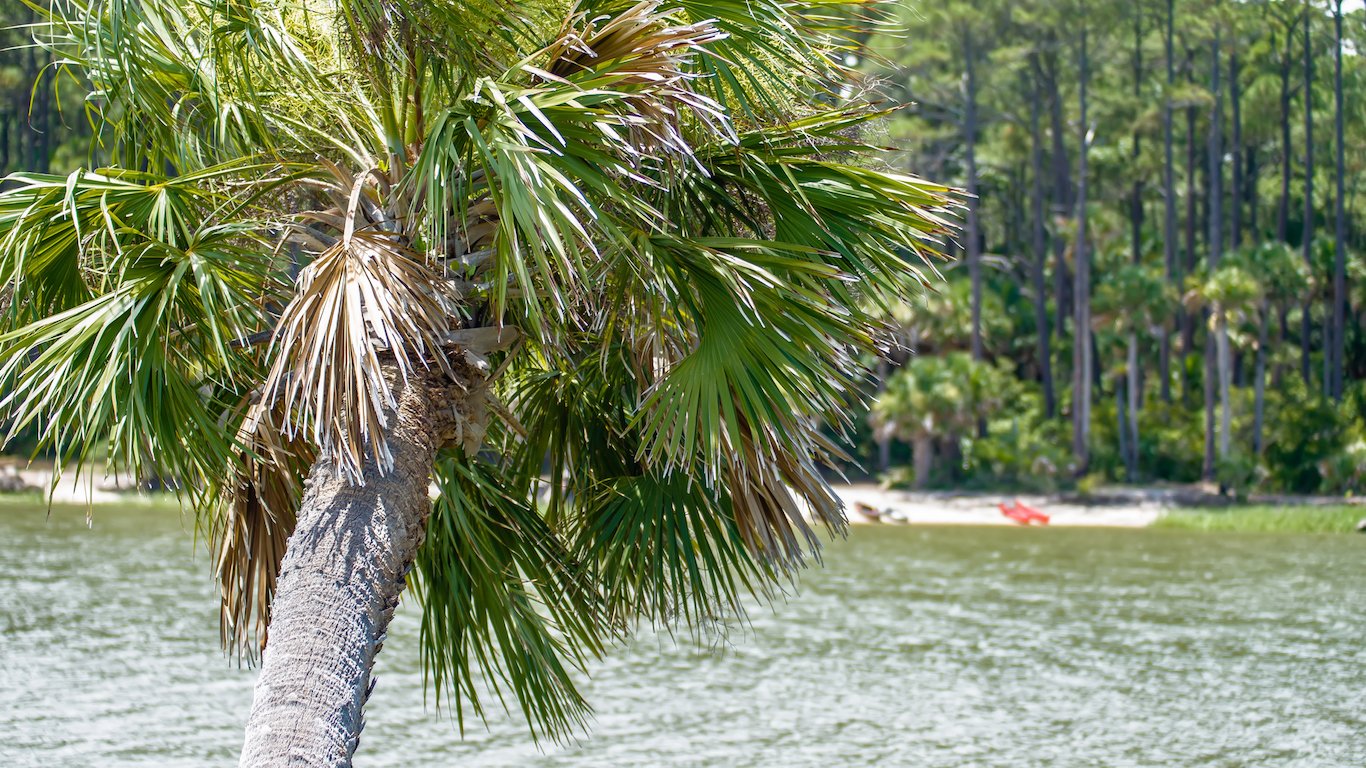
40. South Carolina
> State tree(s): Sabal Palmetto
> Scientific name: Inodes Palmetto
> Maximum height: 82 feet
> Named the state tree in: 1939
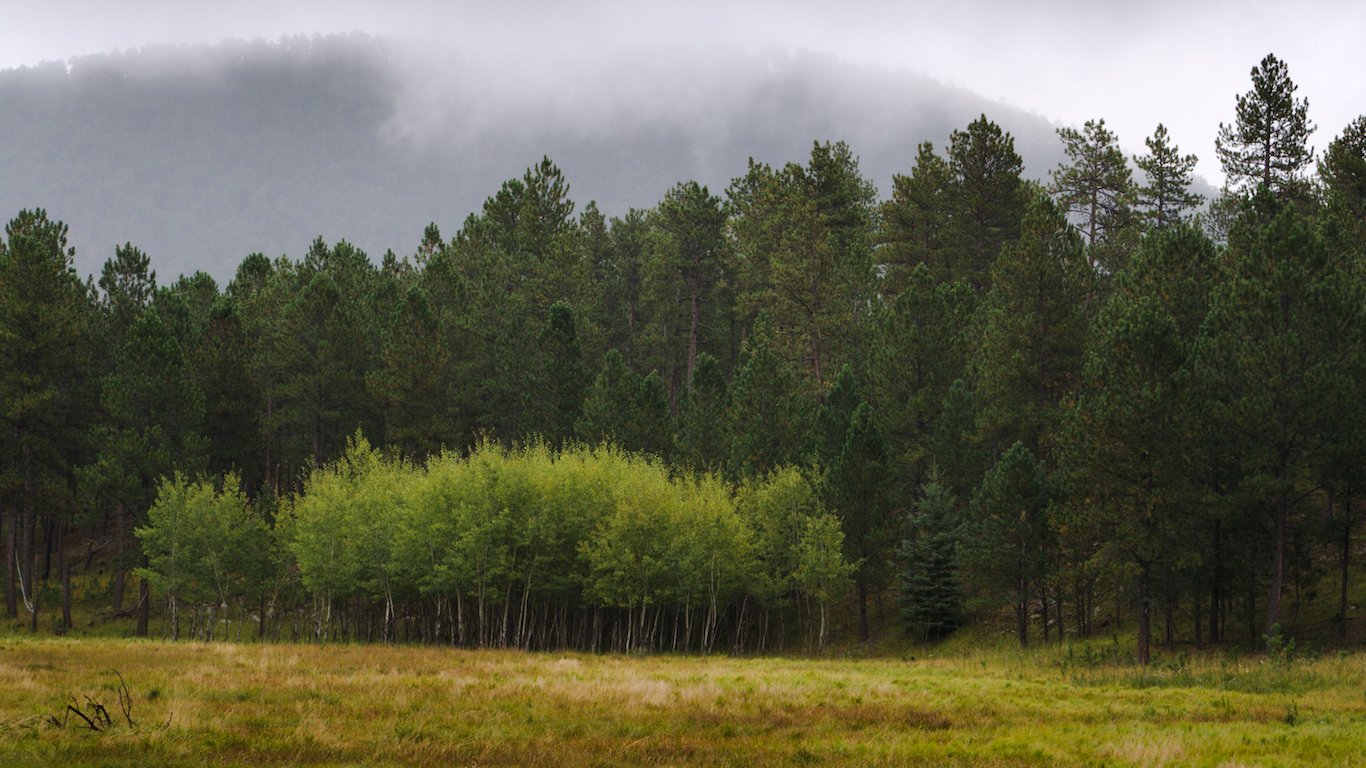
41. South Dakota
> State tree(s): Black Hills Spruce
> Scientific name: Picea glauca
> Maximum height: 40 feet
> Named the state tree in: 1947
[in-text-ad]
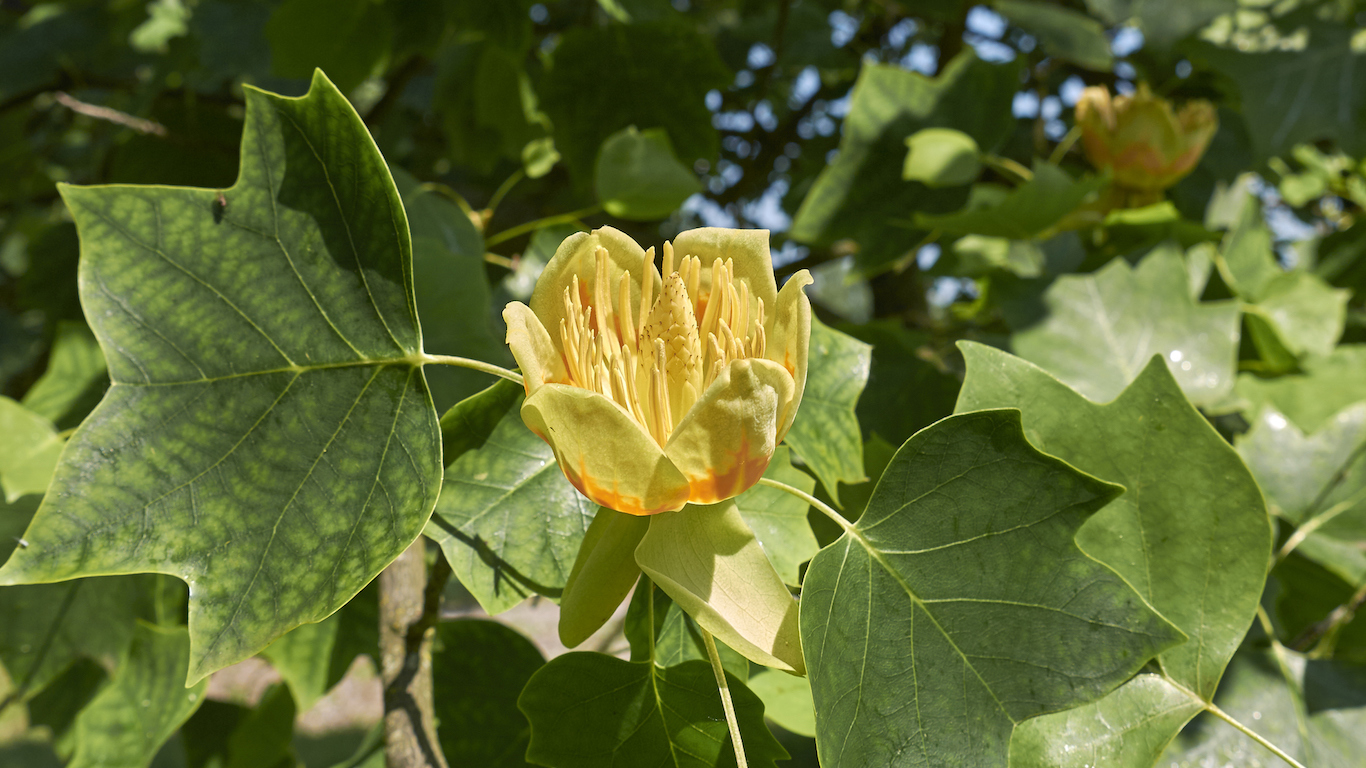
42. Tennessee
> State tree(s): Tulip Poplar and Yellowwood Tree
> Scientific name: Liriodendron tulipifera
> Maximum height: 70 feet
> Named the state tree in: 1947
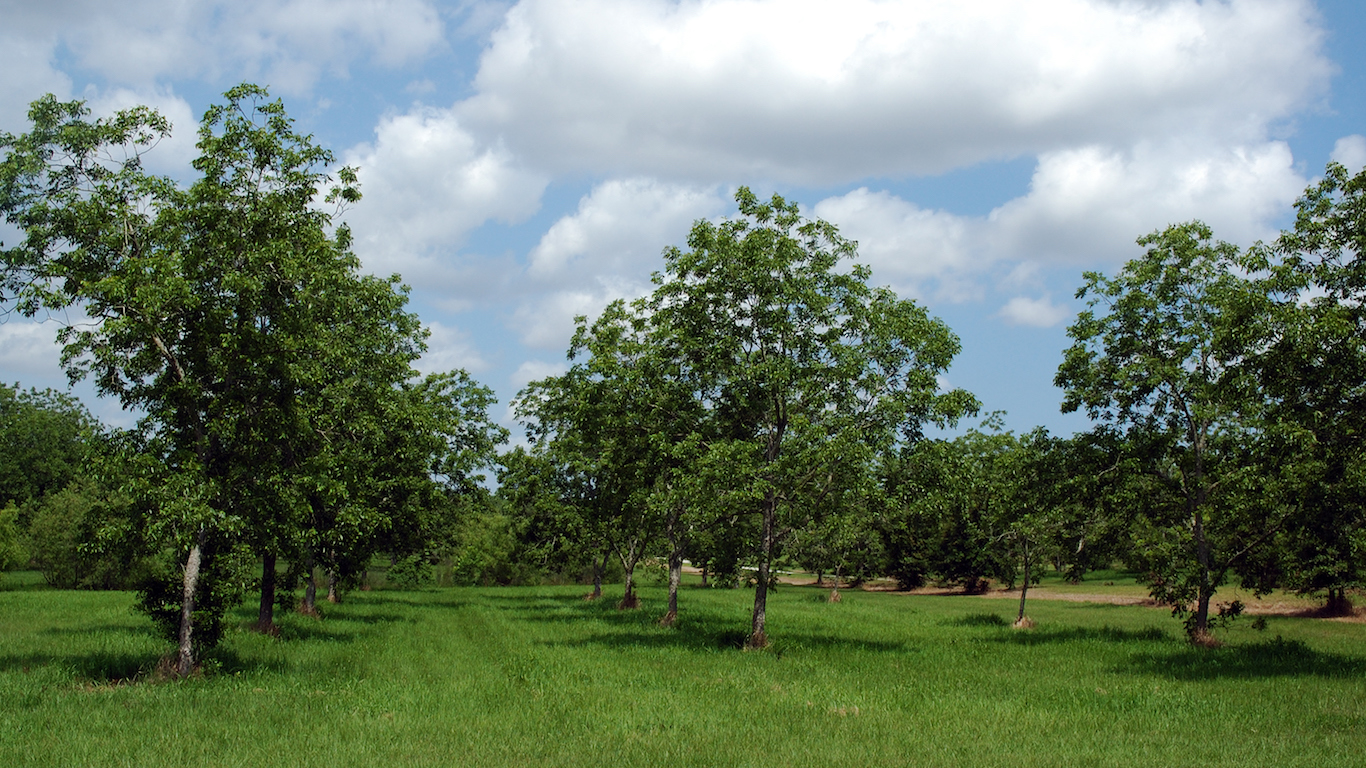
43. Texas
> State tree(s): Pecan Tree
> Scientific name: Carya illinoinensis
> Maximum height: 140 feet
> Named the state tree in: 1919
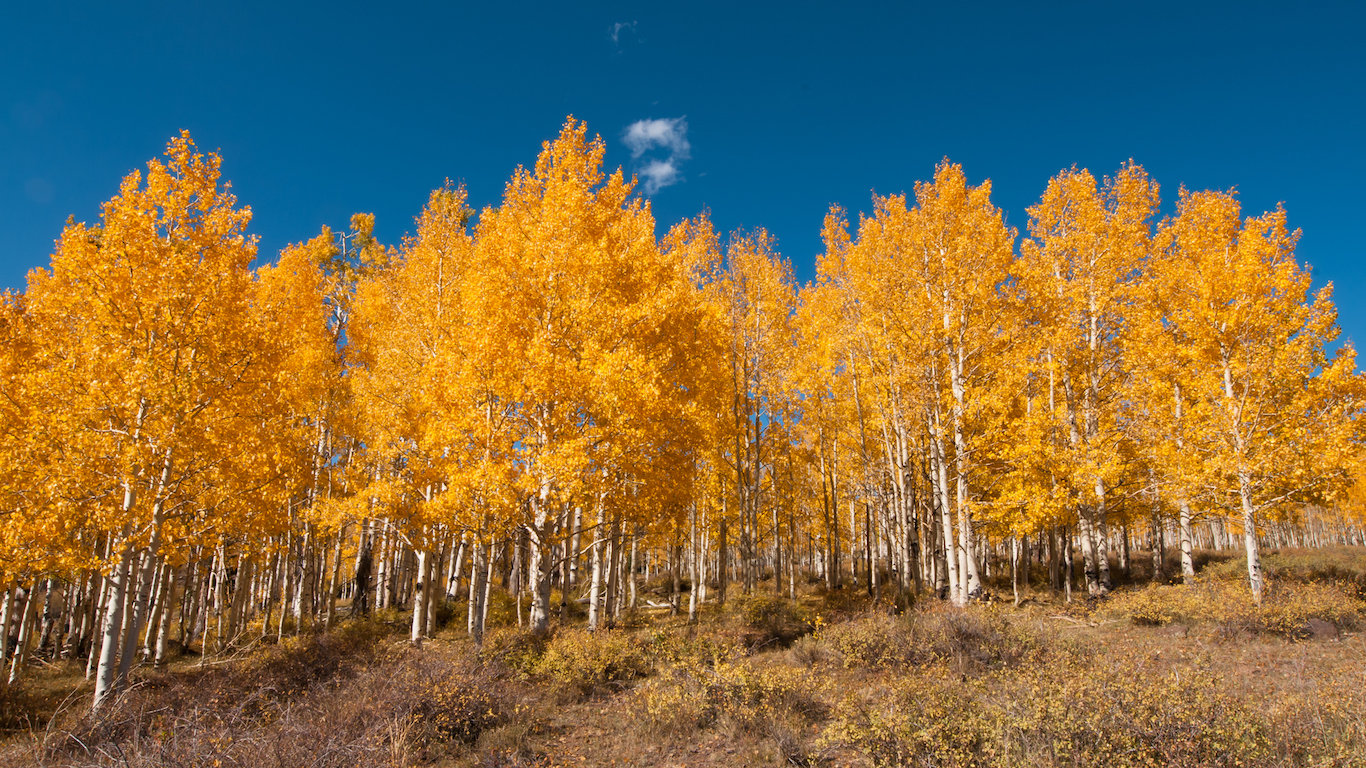
44. Utah
> State tree(s): Quaking Aspen
> Scientific name: Populus tremuloides
> Maximum height: 50 feet
> Named the state tree in: 1933
[in-text-ad-2]
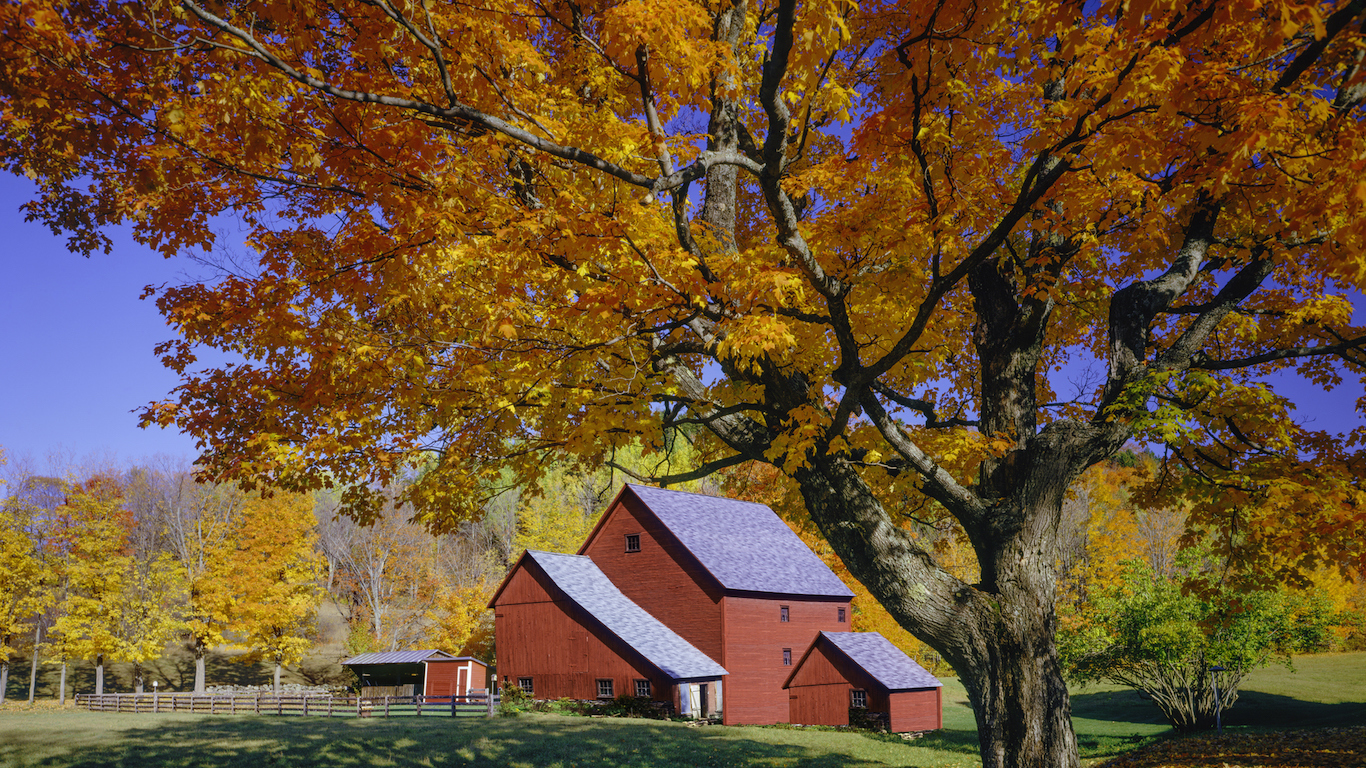
45. Vermont
> State tree(s): Sugar Maple
> Scientific name: Acer saccharum
> Maximum height: 115 feet
> Named the state tree in: 1949
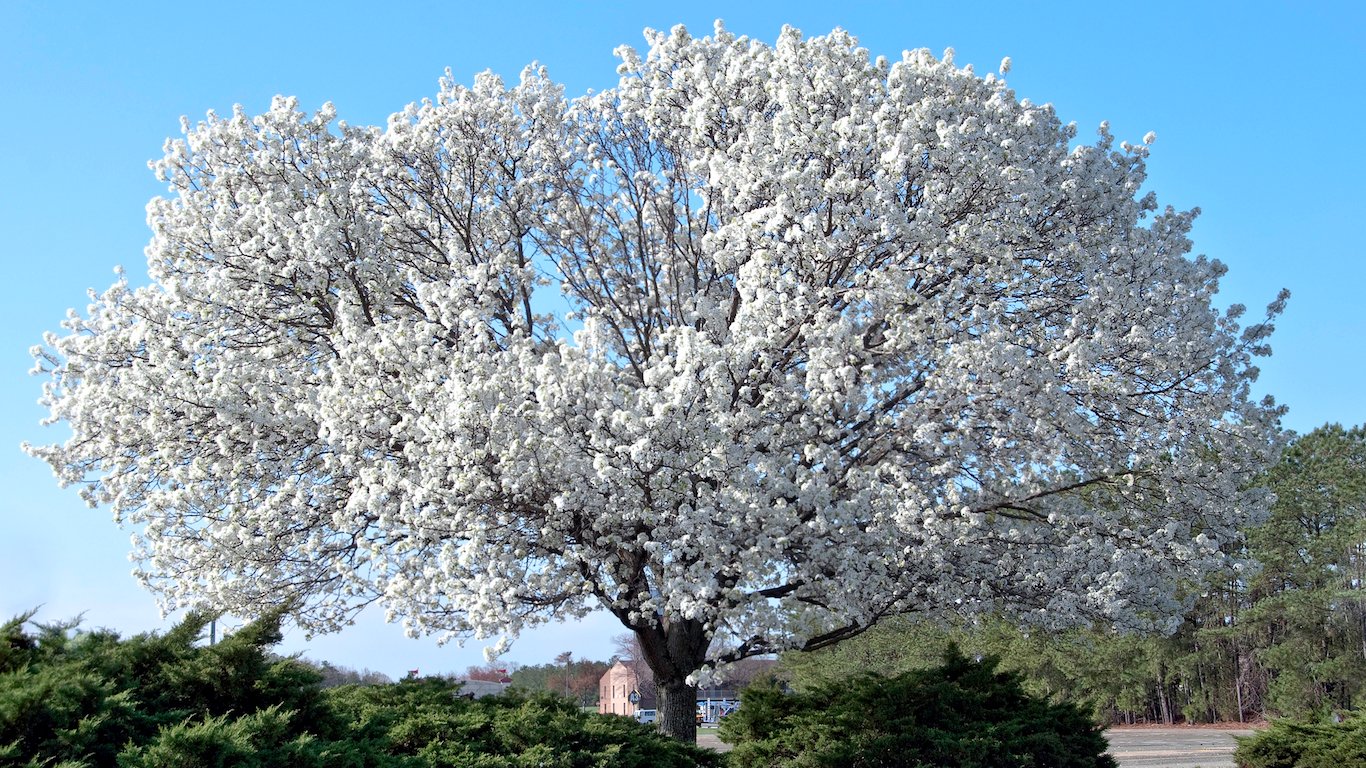
46. Virginia
> State tree(s): Flowering Dogwood
> Scientific name: Cornus florida
> Maximum height: 40 feet
> Named the state tree in: 1918
[in-text-ad]
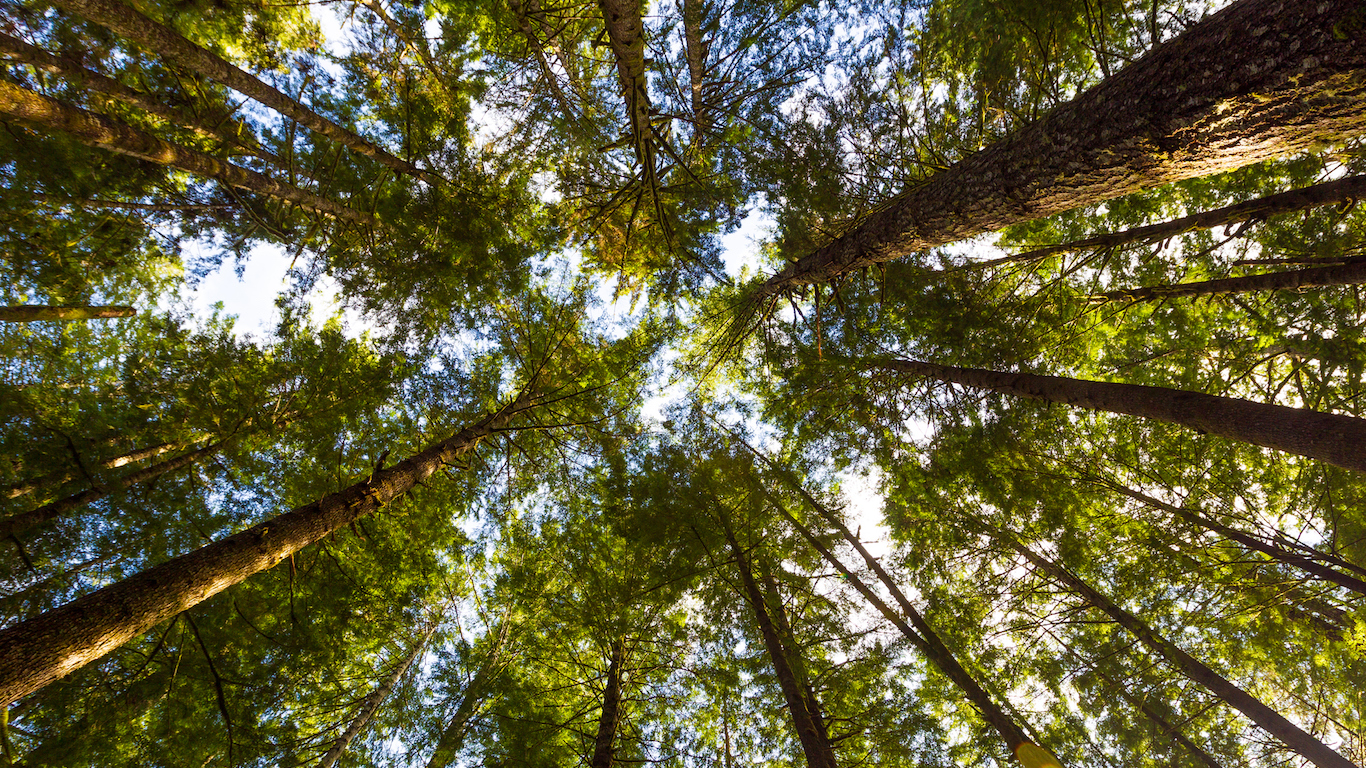
47. Washington
> State tree(s): Western Hemlock
> Scientific name: Tsuga heterophylla
> Maximum height: 200 feet
> Named the state tree in: 1947
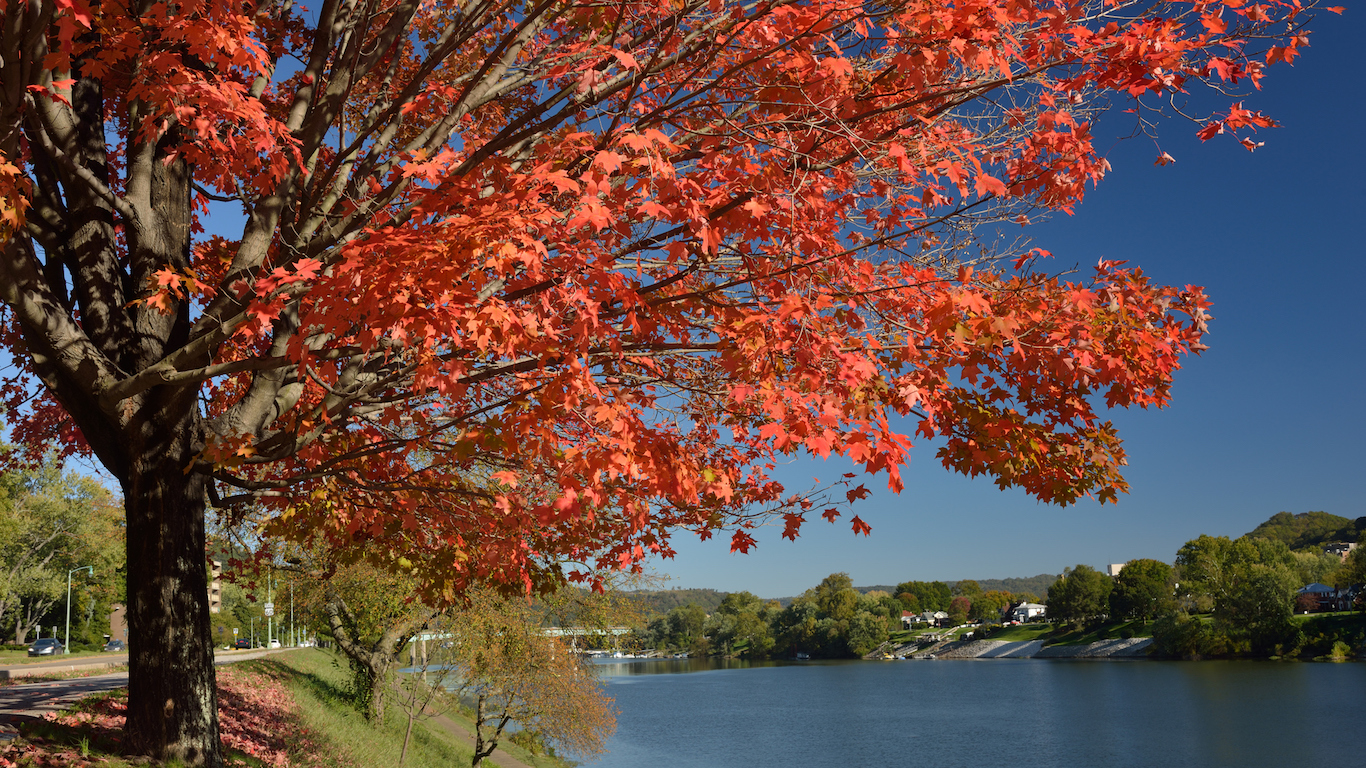
48. West Virginia
> State tree(s): Sugar Maple
> Scientific name: Acer saccharum
> Maximum height: 115 feet
> Named the state tree in: 1949
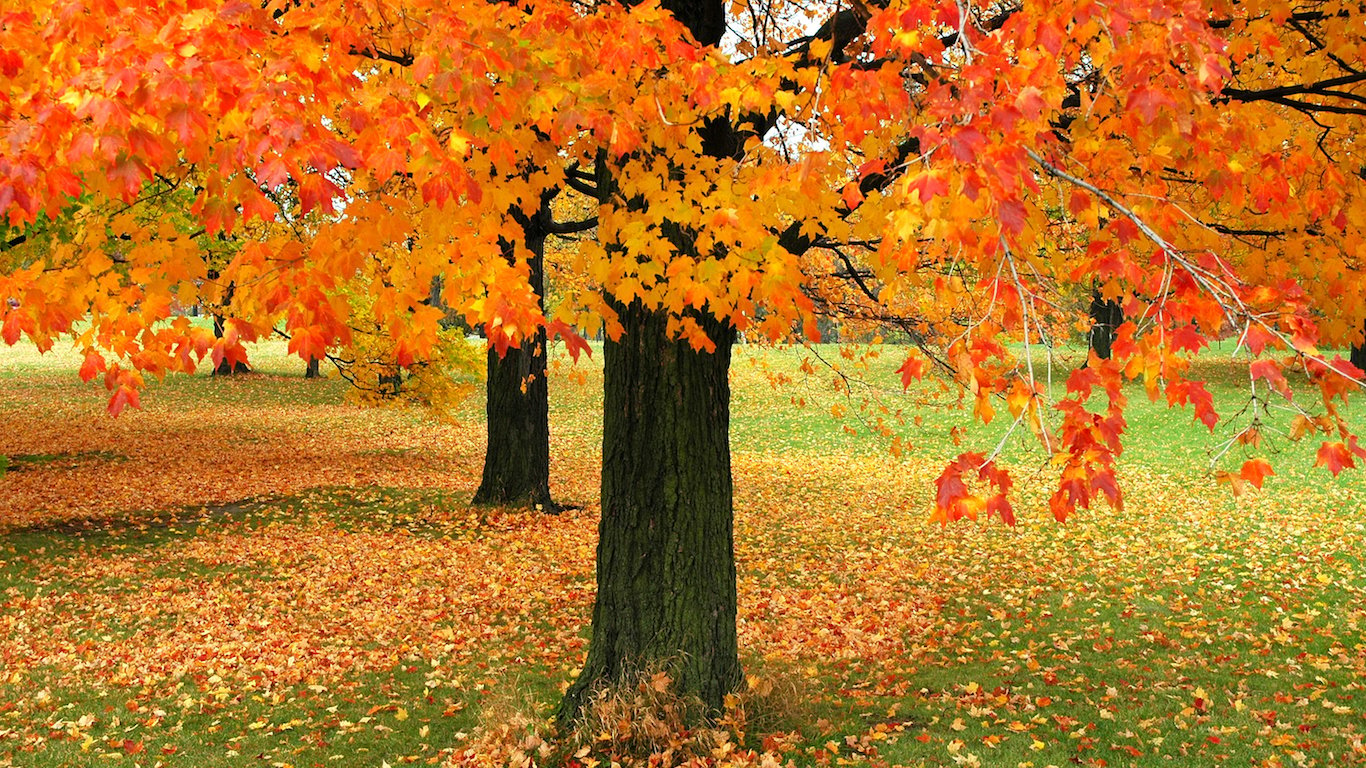
49. Wisconsin
> State tree(s): Sugar Maple
> Scientific name: Acer saccharum
> Maximum height: 115 feet
> Named the state tree in: 1949
[in-text-ad-2]
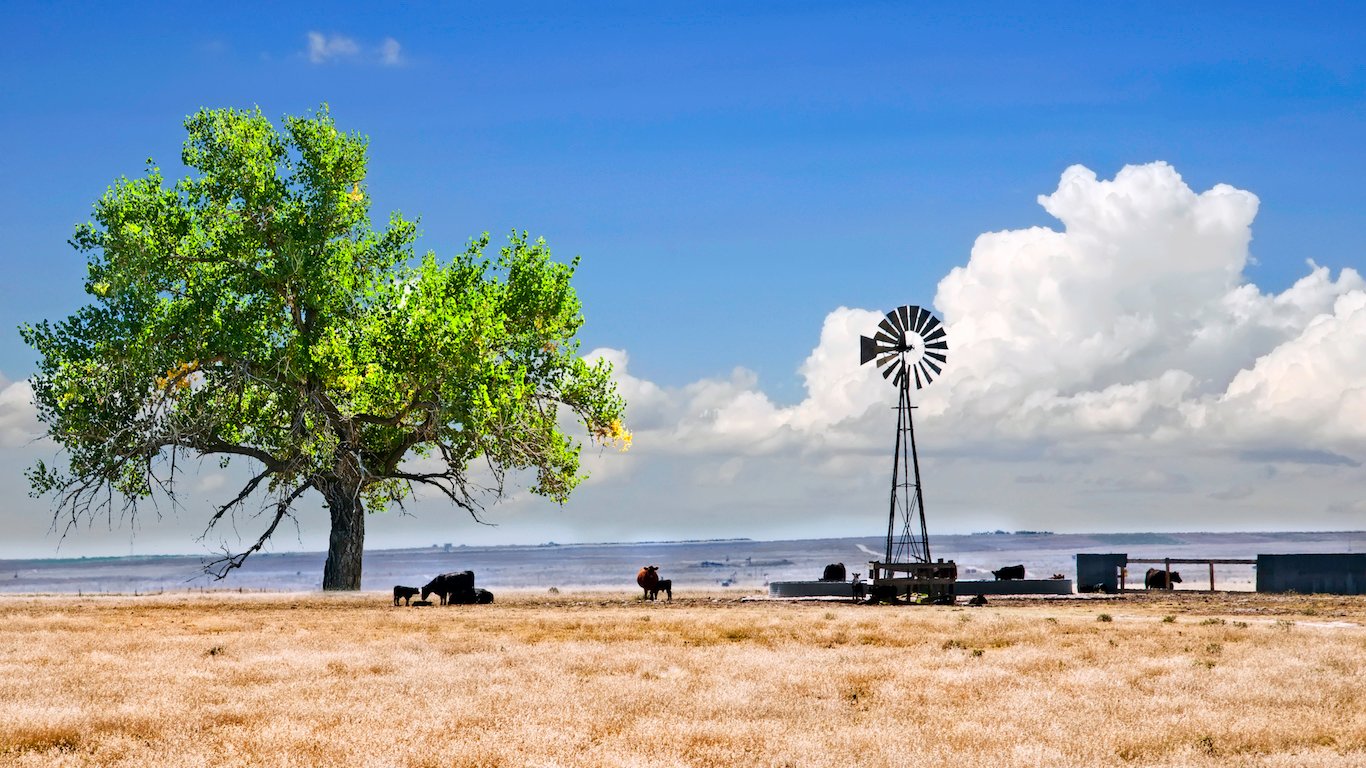
50. Wyoming
> State tree(s): Plains Cottonwood
> Scientific name: Populus deltoides
> Maximum height: 190 feet
> Named the state tree in: 1947
Detailed Findings & Methodology
Trees have long been the beloved subject of poets such as Joyce Kilmer, Robert Frost, and William Makepeace Thackeray, but they still needed a champion. Eventually, forest and tree preservation concerns prompted conservation efforts.
In the early part of the 20th century, states began to recognize trees indigenous to their state and started designating them official state trees. Virginia was the first state to name an official tree when it named the Flowering Dogwood in 1918. Alabama was the last to do so, designating the Southern Longleaf Pine as its official tree in 1997. Half of all the official trees were named in the 1930s and 1940s.
If you can’t get to all 50 states to see each state tree, you can see all 50 state trees in Washington, D.C., at The National Grove of State Trees, a 30-acre attraction at the United States National Arboretum.
Planting for the grove began in 1989 and was a collaboration of the National Association of State Foresters, the American Forest Foundation, the USDA Forest Service, and the U.S. National Arboretum.
Institutions such as the national arboretum raise awareness about tree population as concerns about deforestation persist. According to a study by Nature magazine three years ago, there are 3.04 trillion trees on our planet, or 422 trees for every person on Earth. In the U.S., there are 716 trees for every person. Those numbers were a pleasant surprise to scientists. But the study also found that there are 46% fewer trees since deforestation was begun by mankind.
24/7 Wall St. compiled a list of each state’s official tree from online sources, including state websites, media outlets, and information from United States National Arboretum and Nature magazine.
Take This Retirement Quiz To Get Matched With A Financial Advisor (Sponsored)
Take the quiz below to get matched with a financial advisor today.
Each advisor has been vetted by SmartAsset and is held to a fiduciary standard to act in your best interests.
Here’s how it works:
1. Answer SmartAsset advisor match quiz
2. Review your pre-screened matches at your leisure. Check out the
advisors’ profiles.
3. Speak with advisors at no cost to you. Have an introductory call on the phone or introduction in person and choose whom to work with in the future
Take the retirement quiz right here.
Thank you for reading! Have some feedback for us?
Contact the 24/7 Wall St. editorial team.
 24/7 Wall St.
24/7 Wall St. 24/7 Wall St.
24/7 Wall St. 24/7 Wall St.
24/7 Wall St. 24/7 Wall St.
24/7 Wall St. 24/7 Wall St.
24/7 Wall St. 24/7 Wall St.
24/7 Wall St. 24/7 Wall St.
24/7 Wall St.
